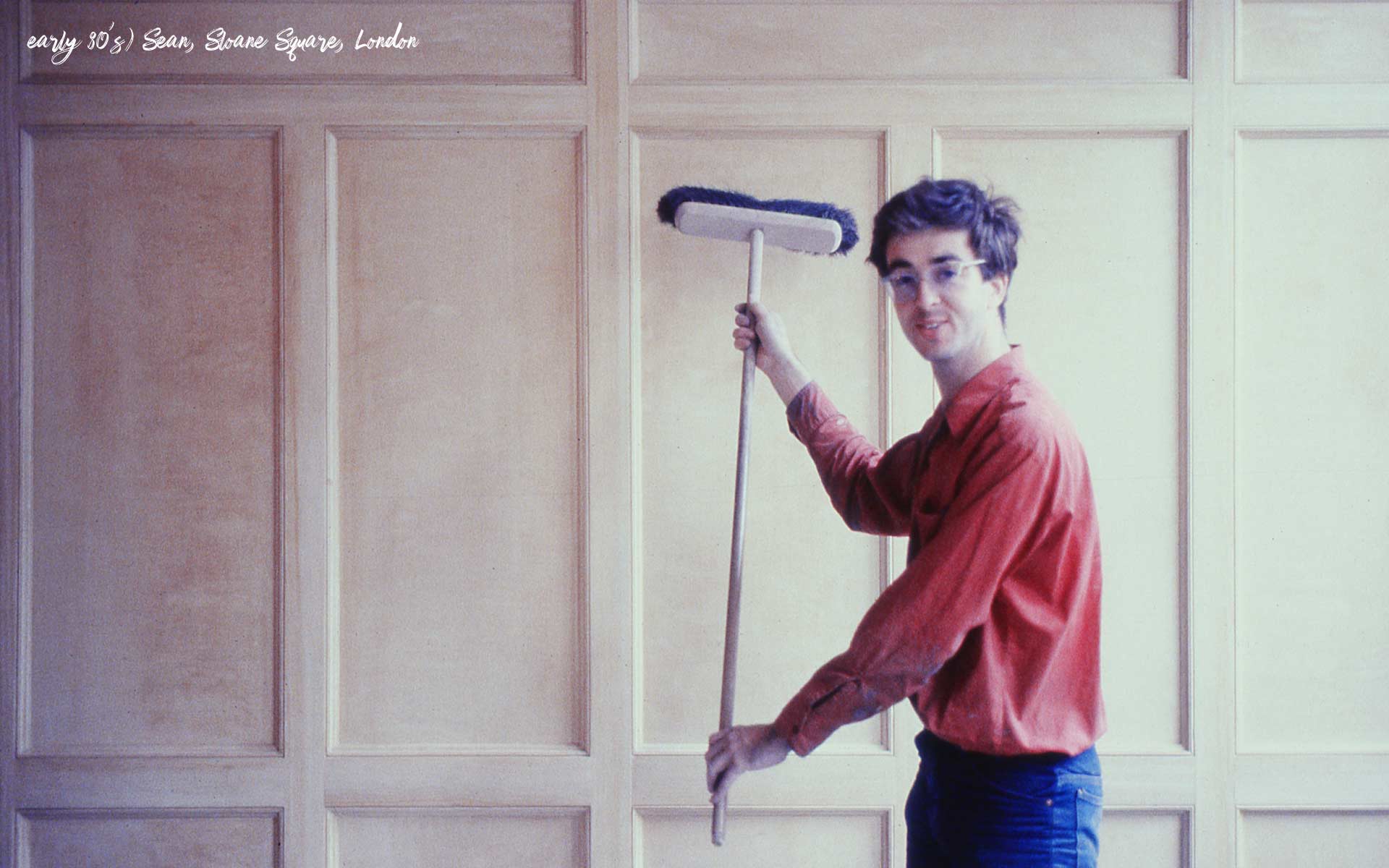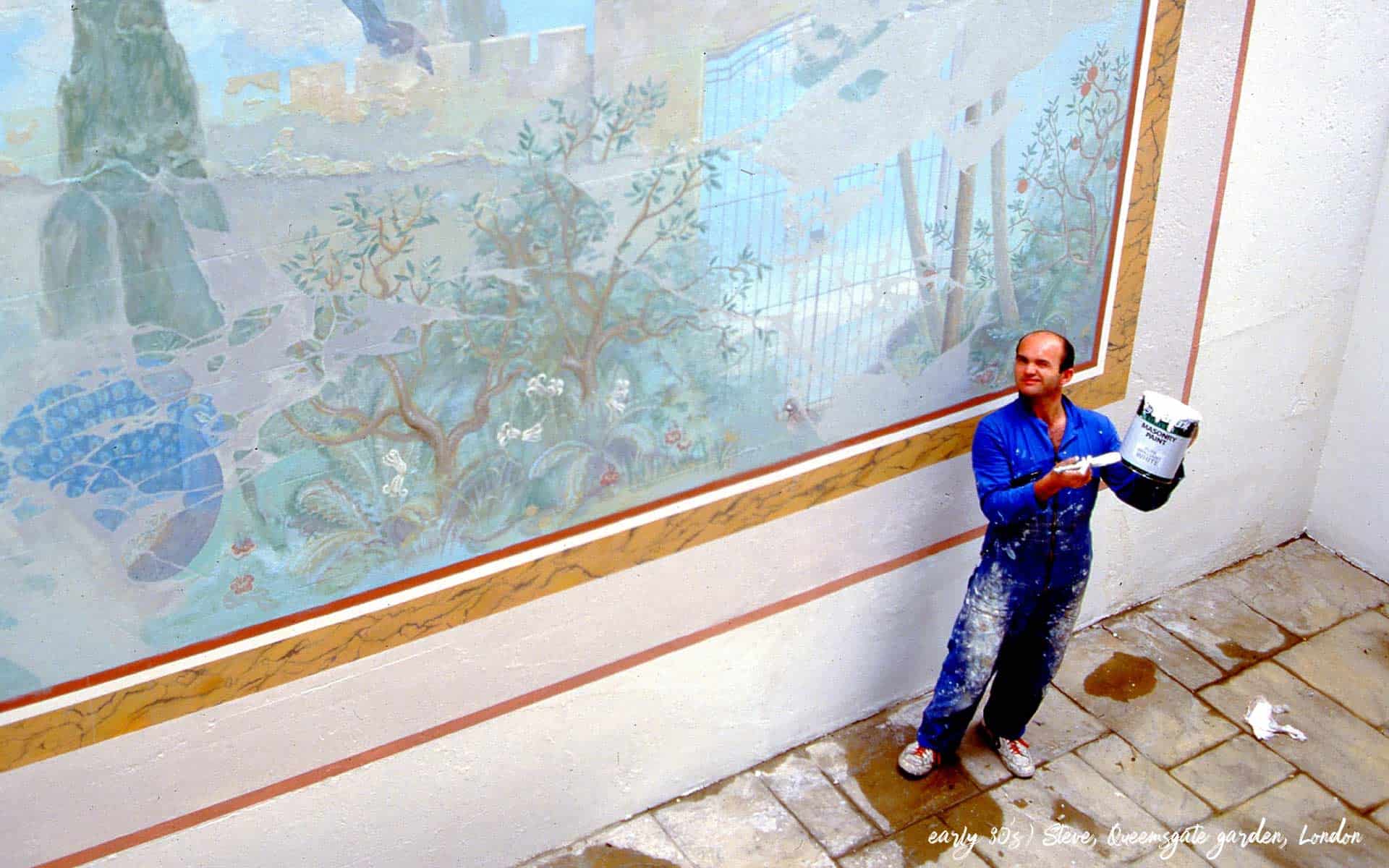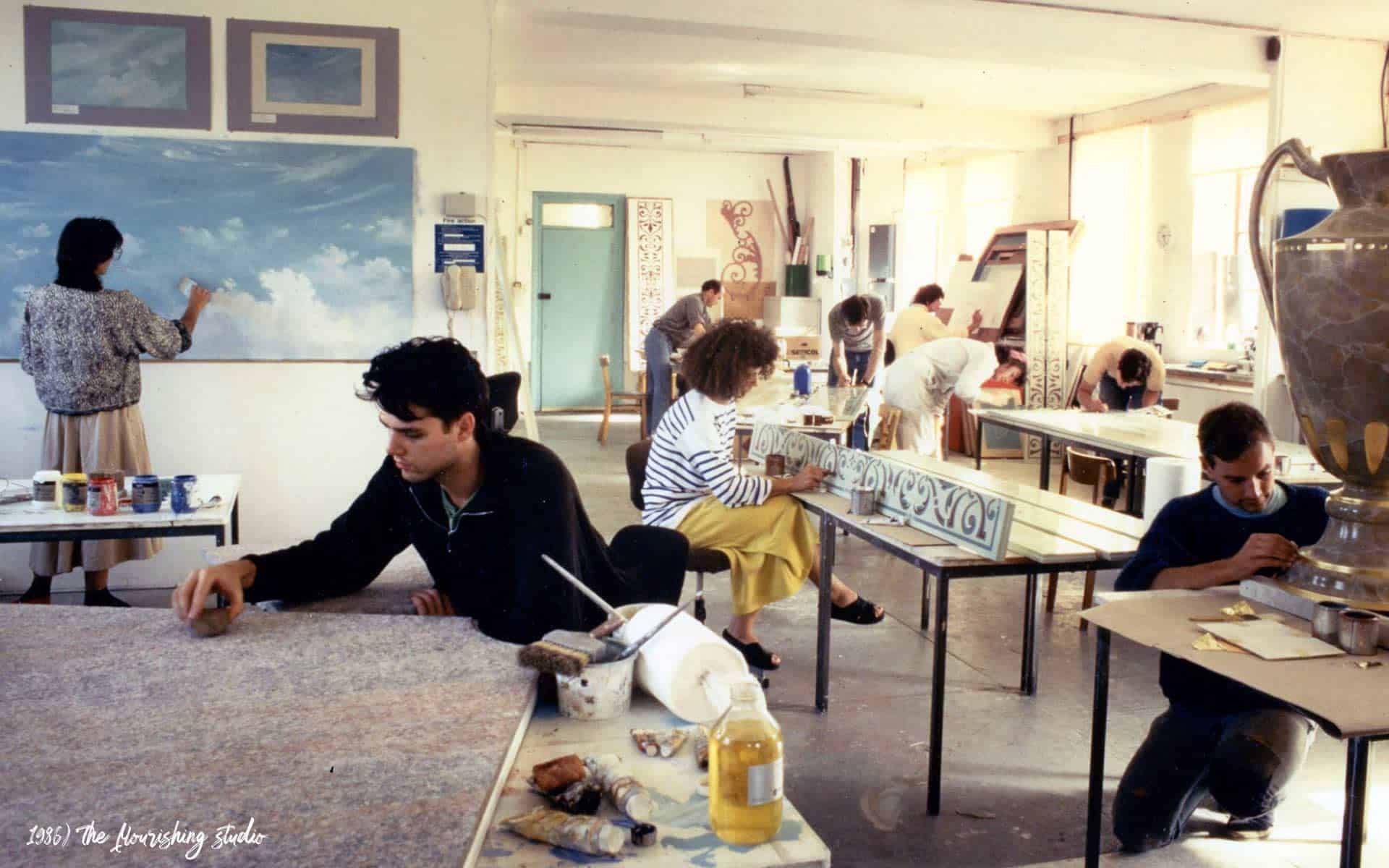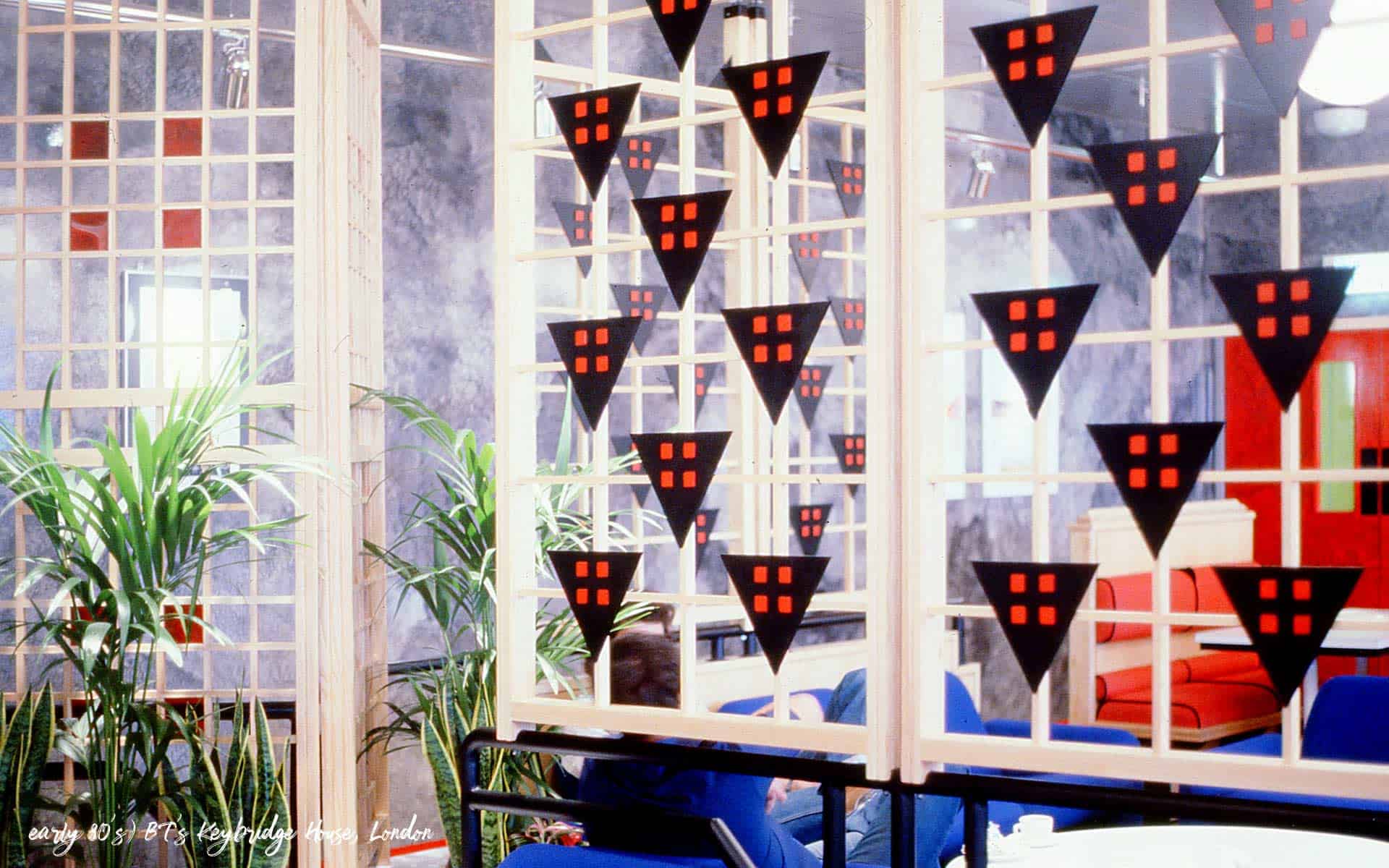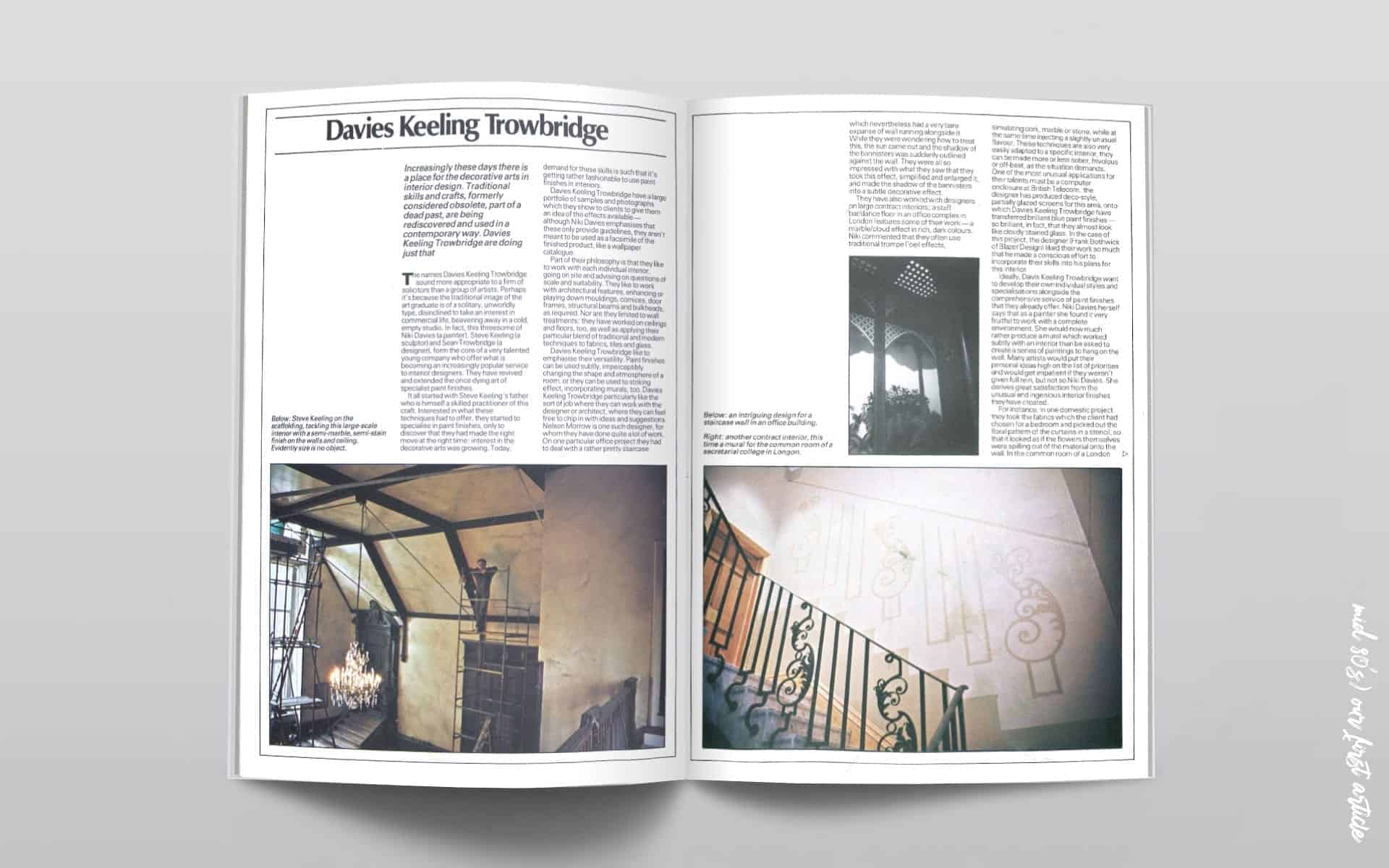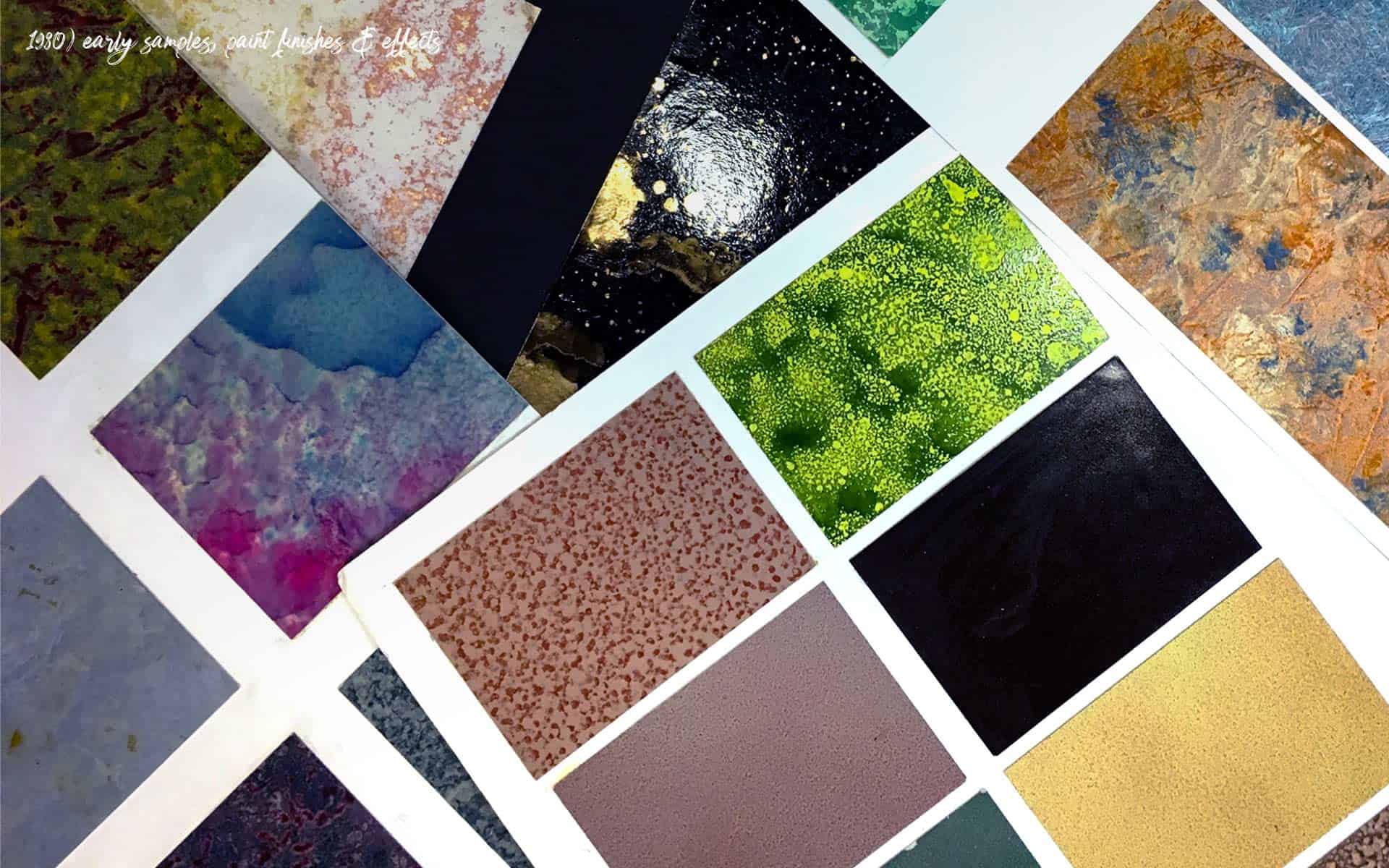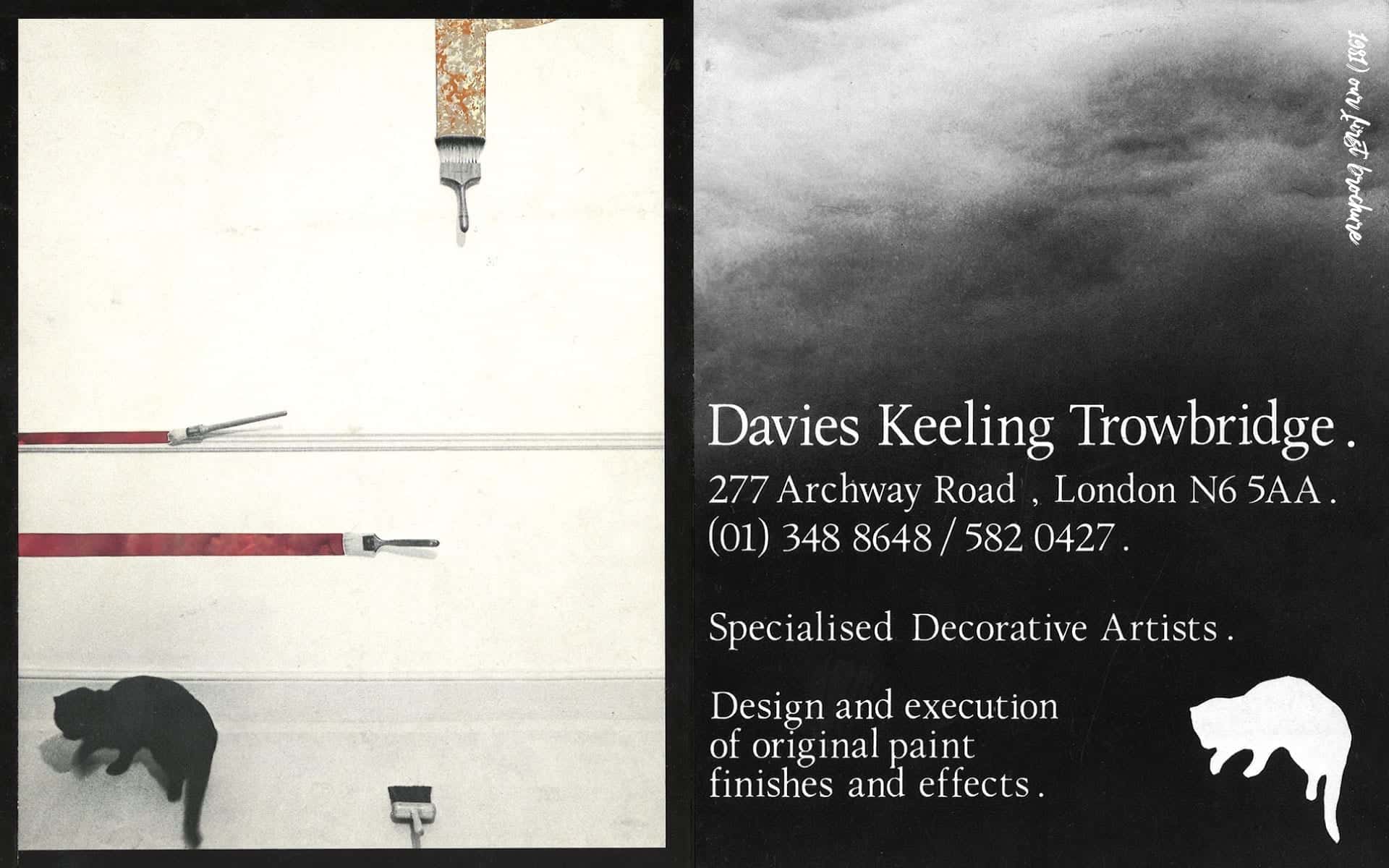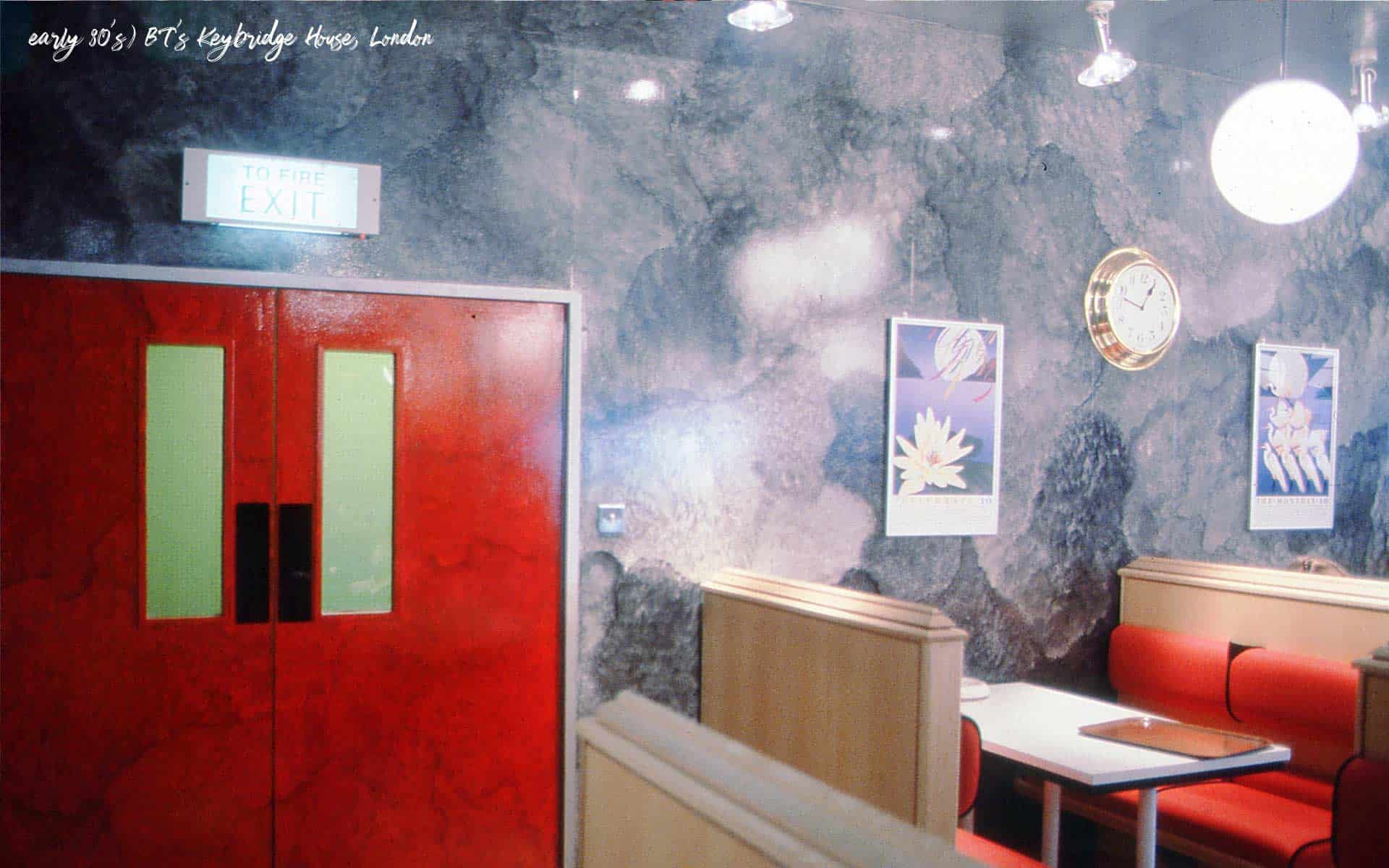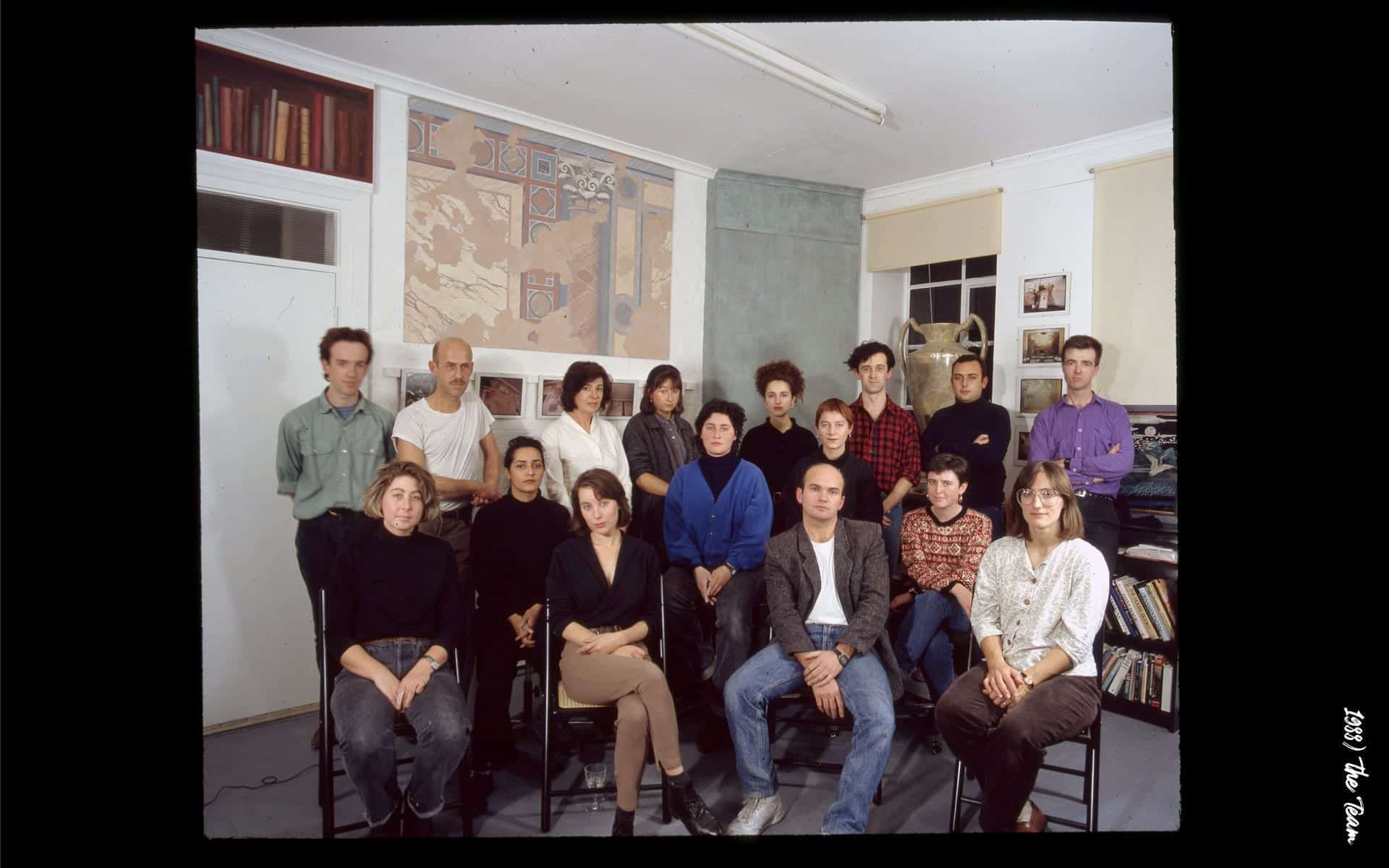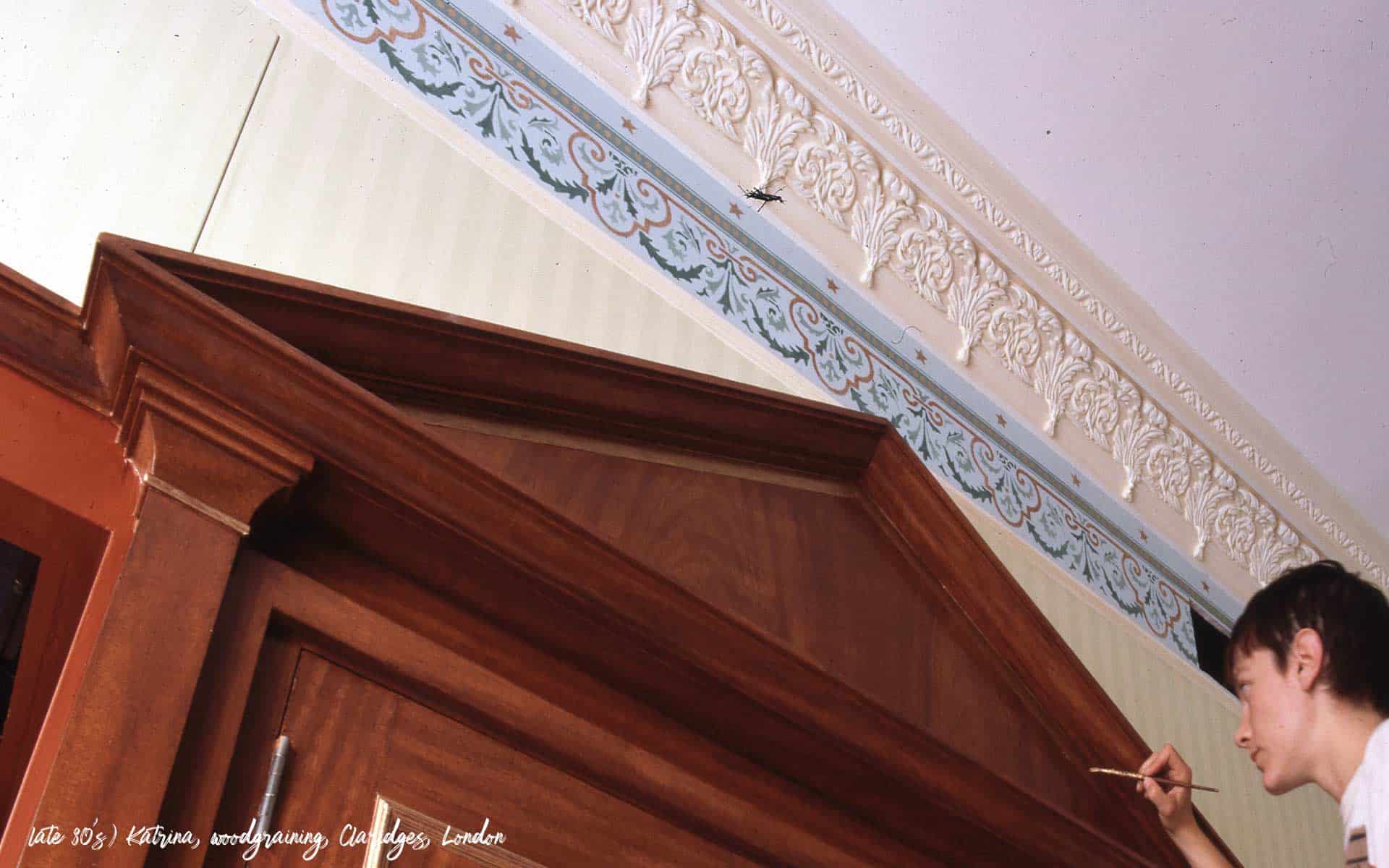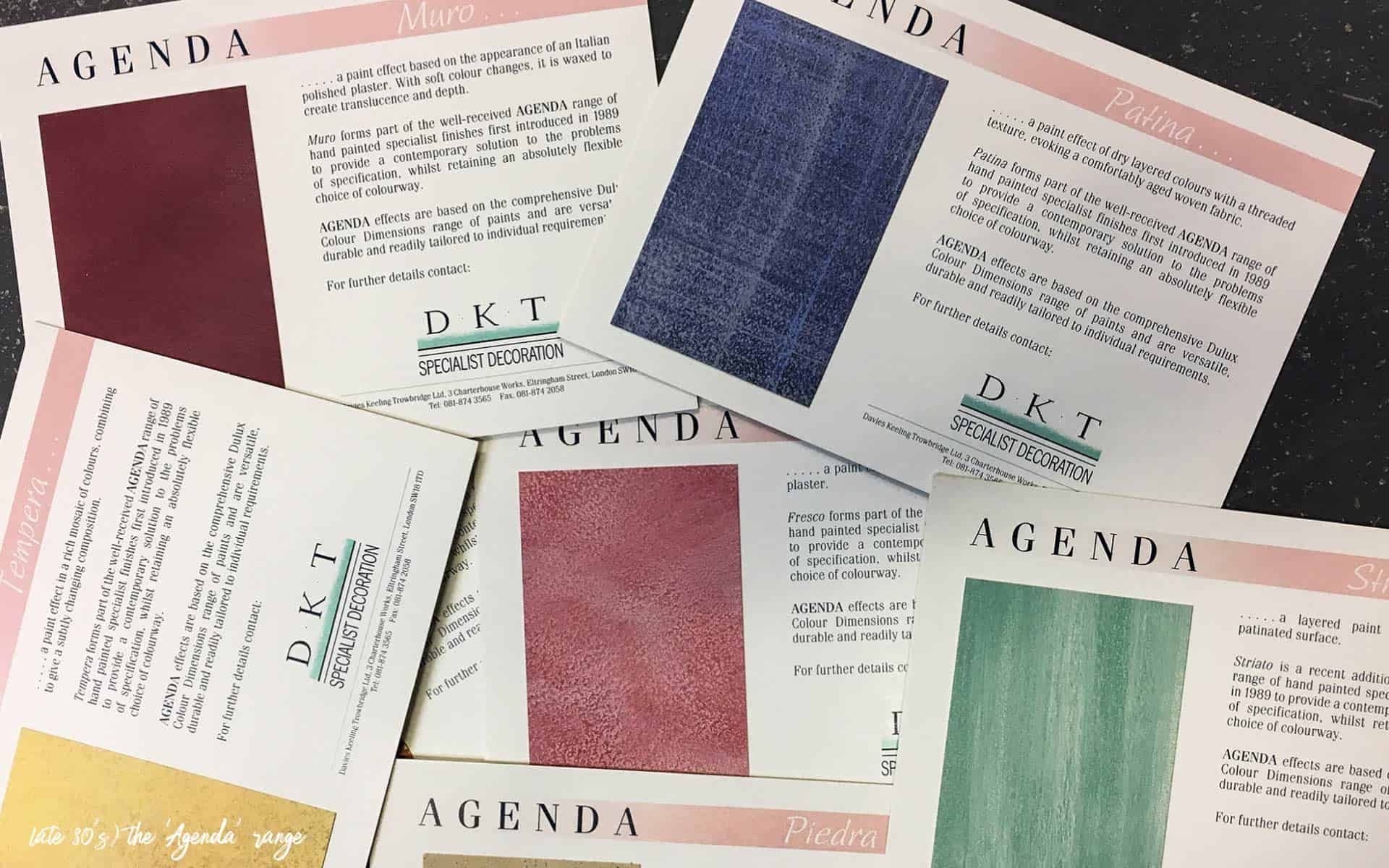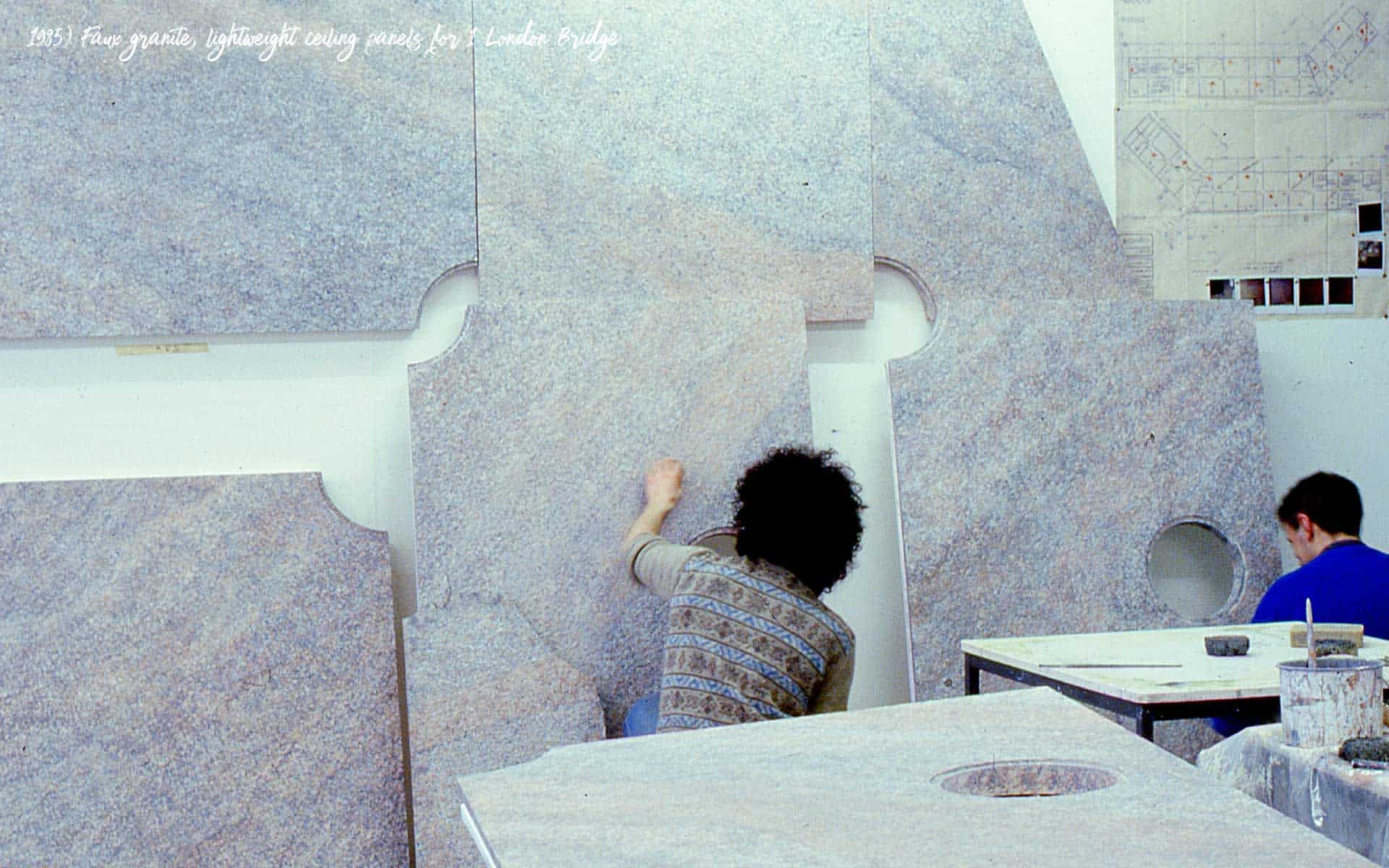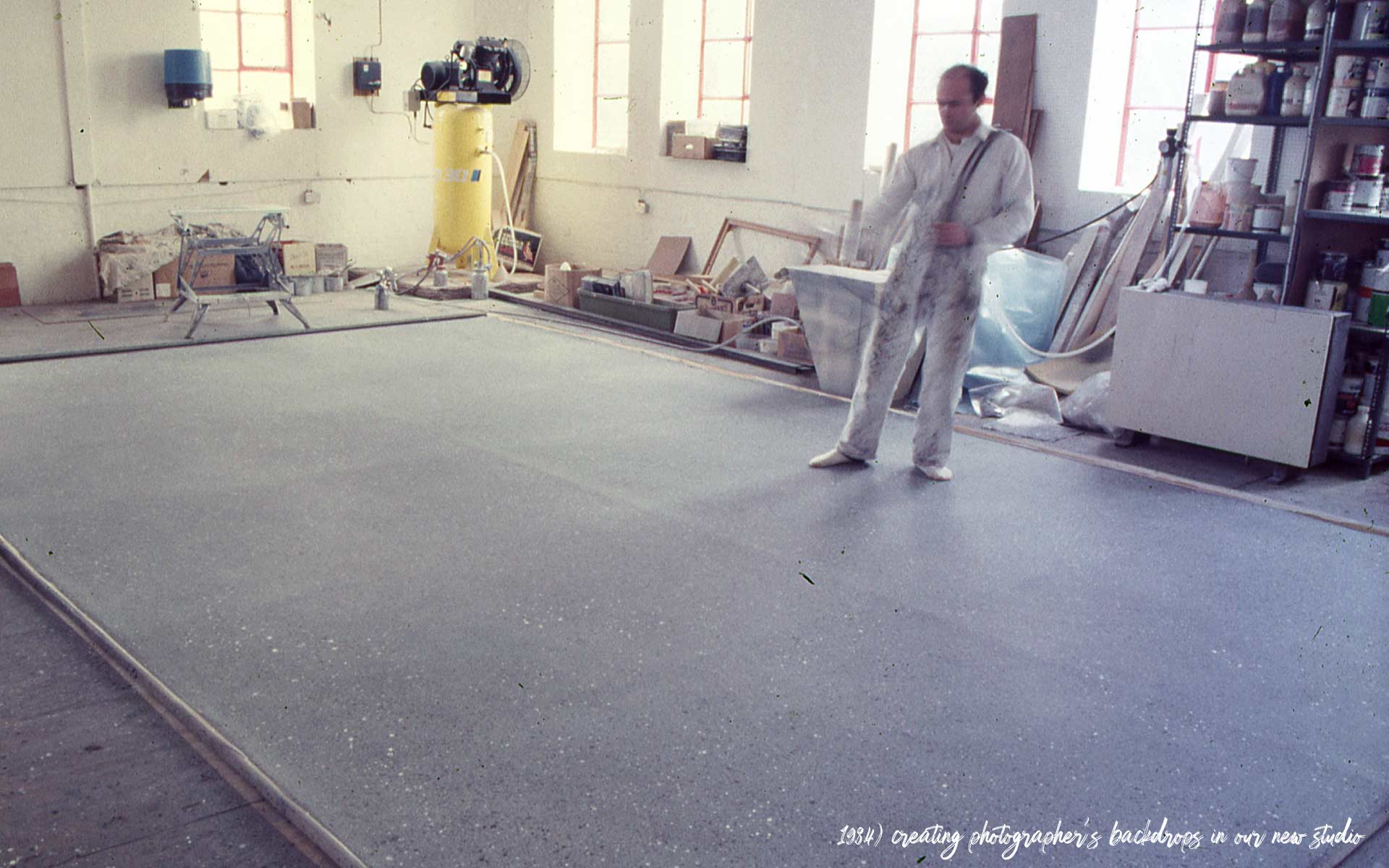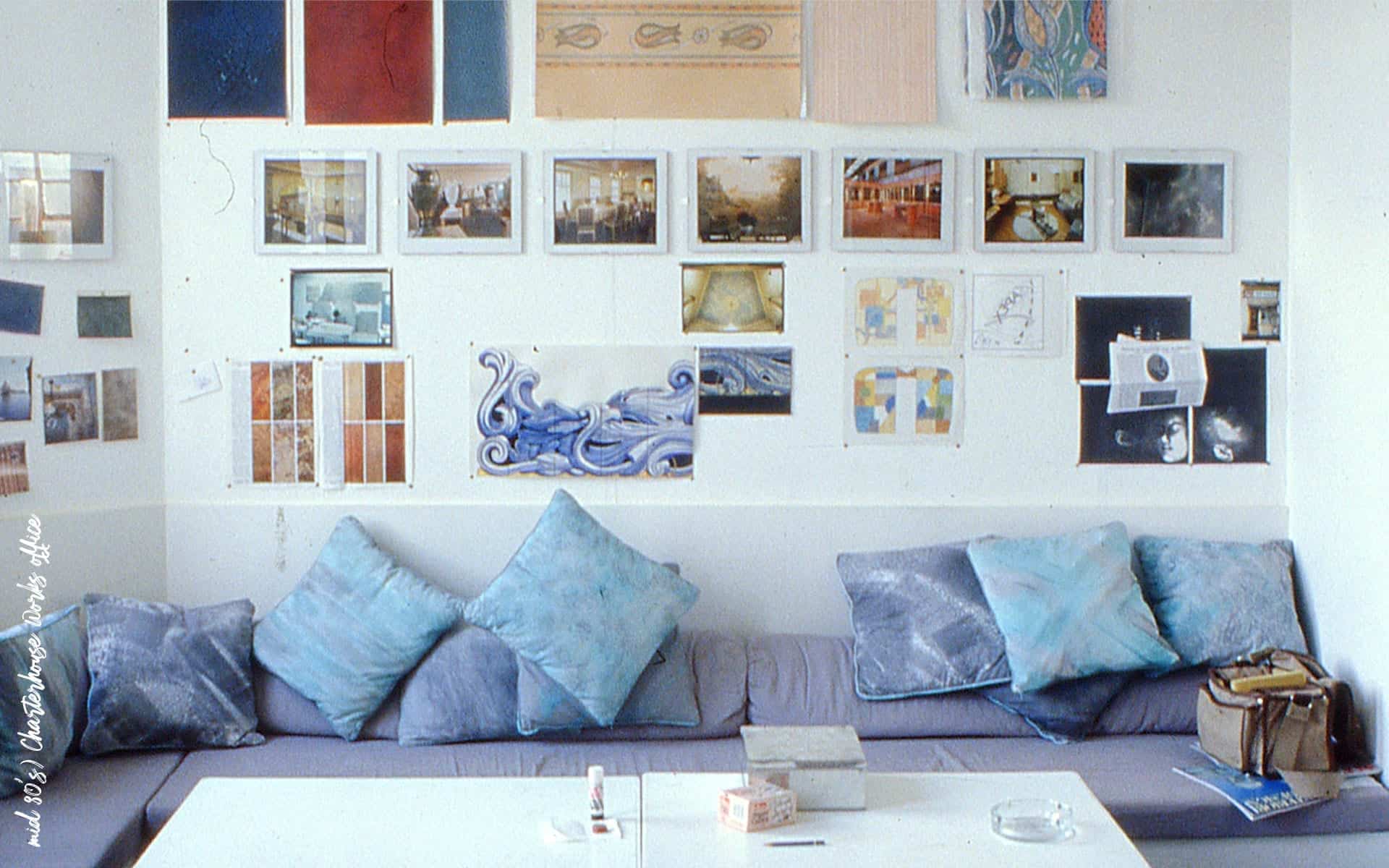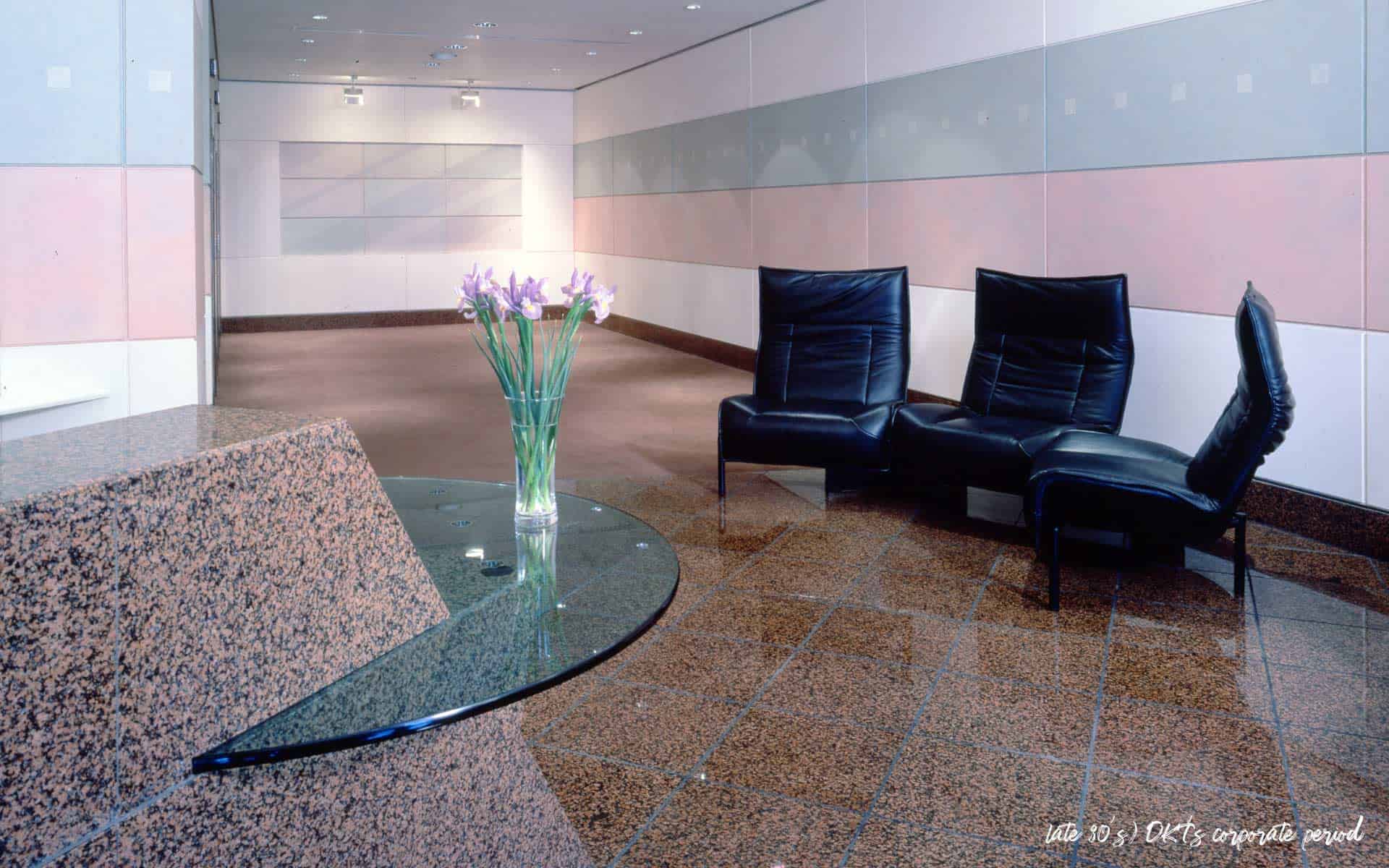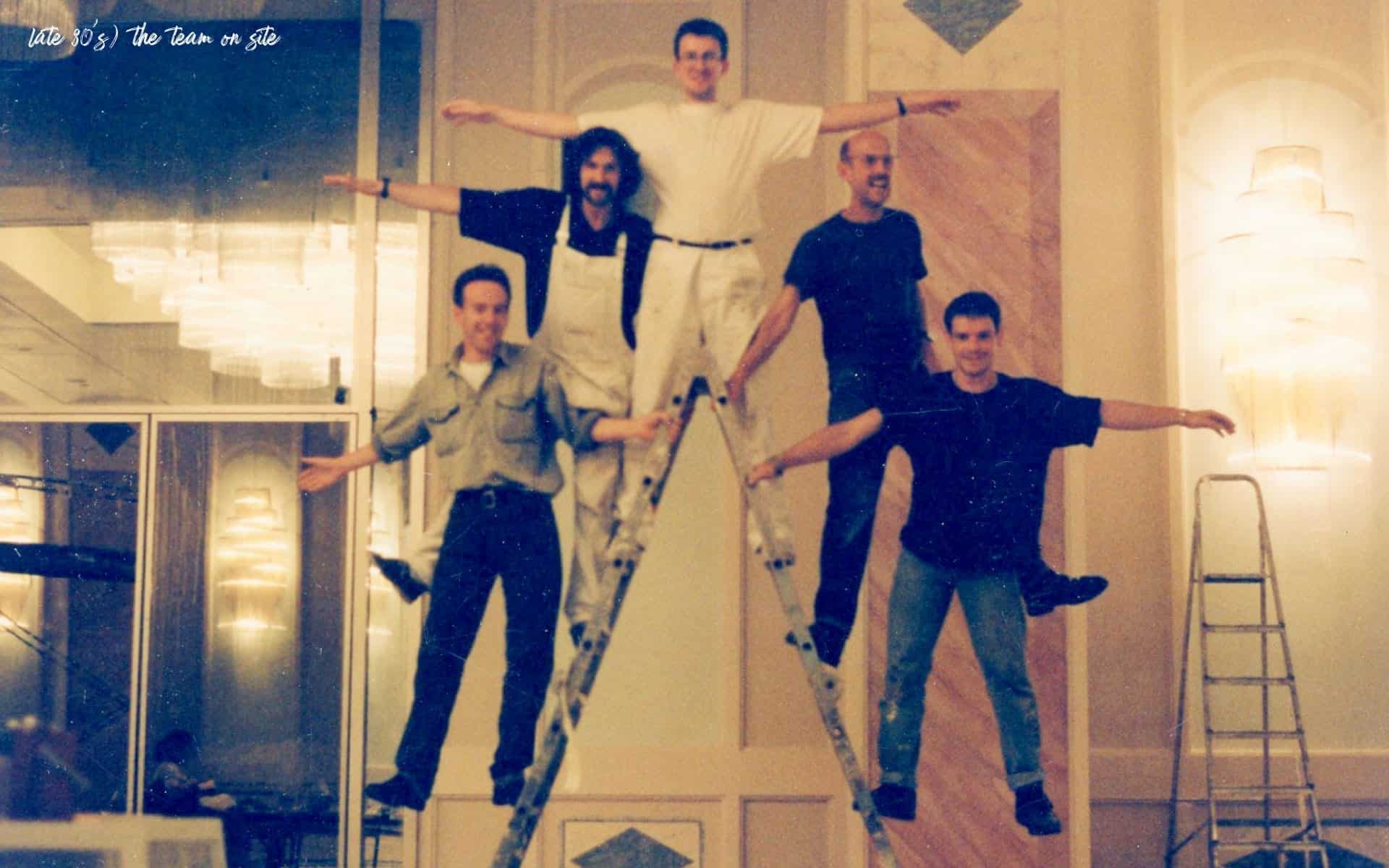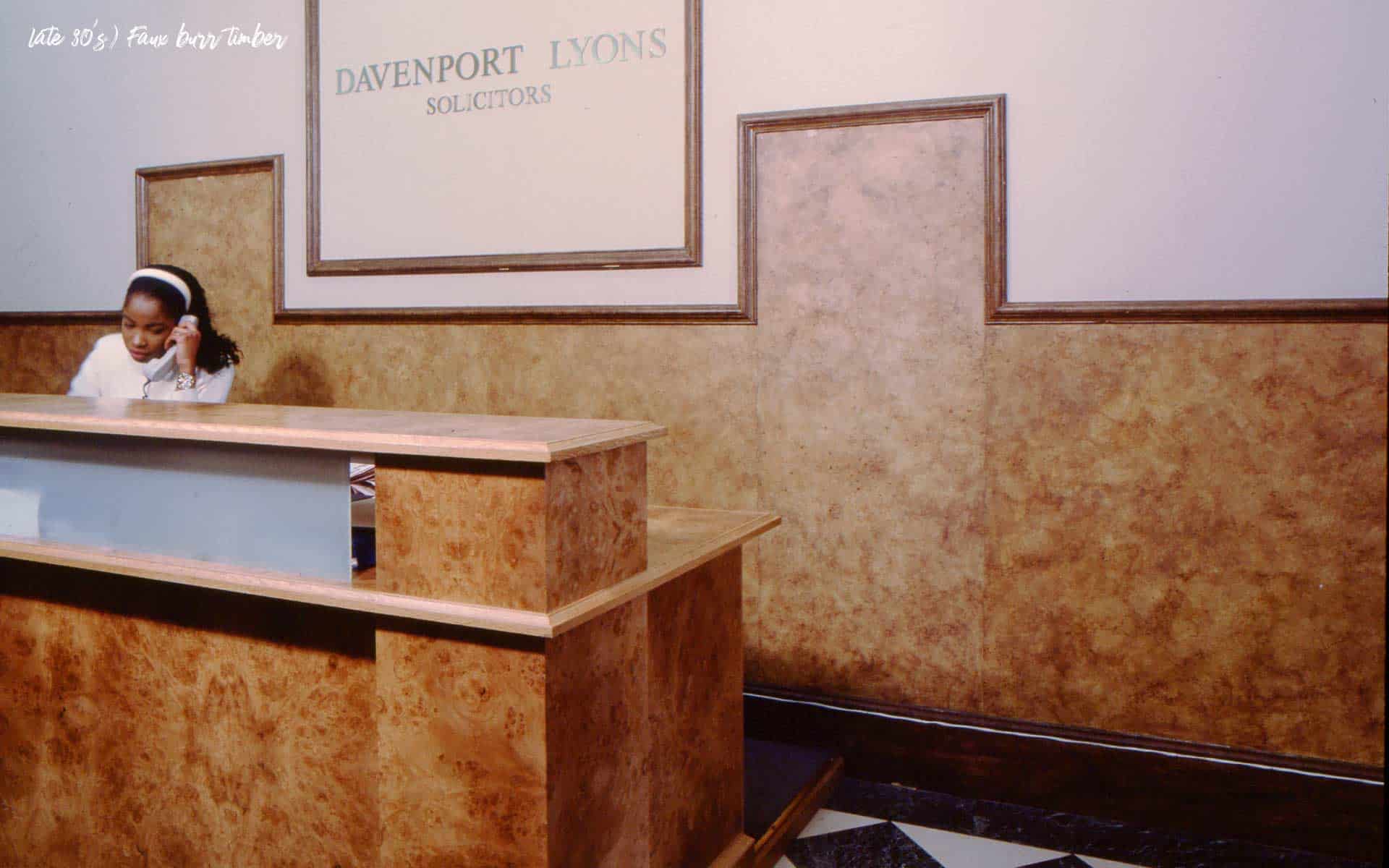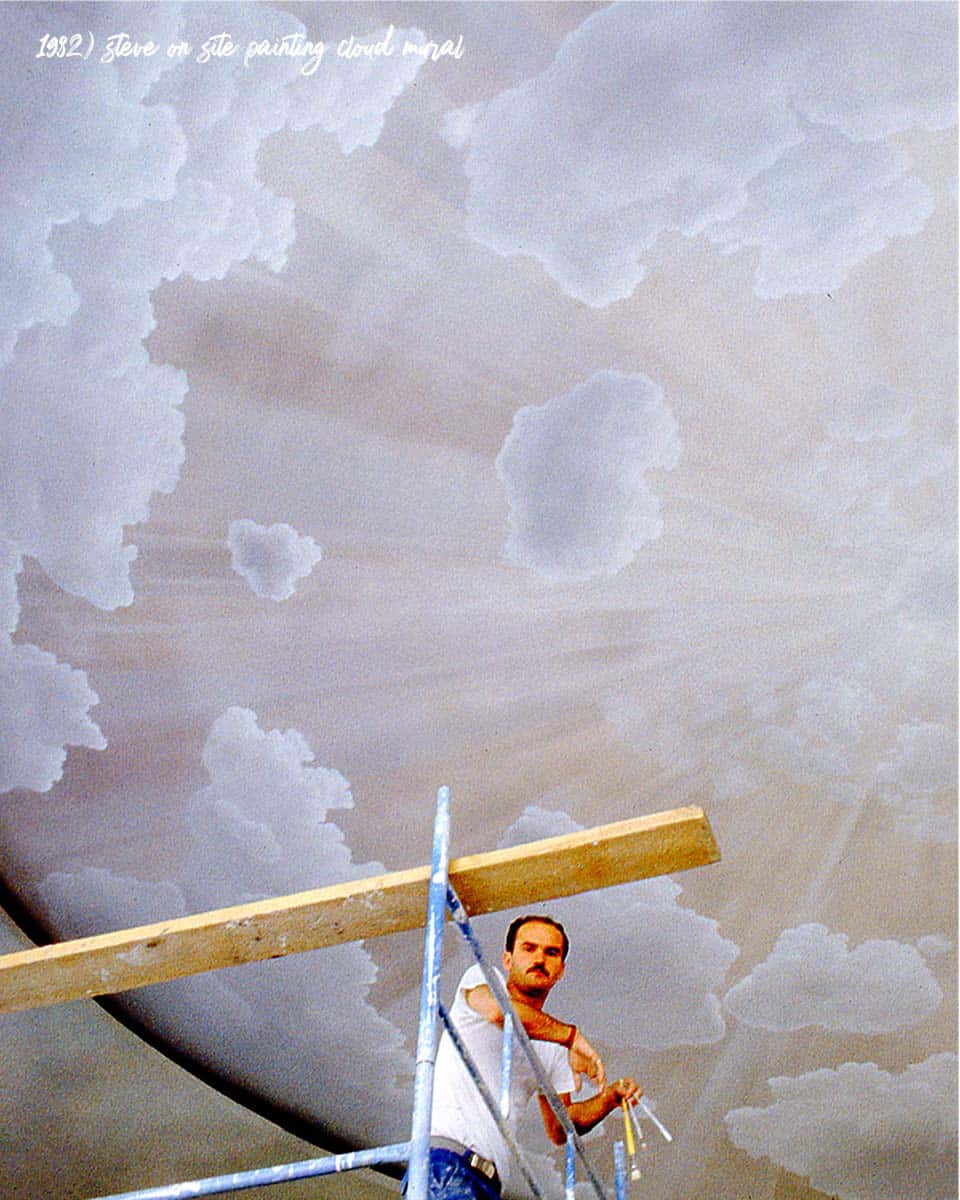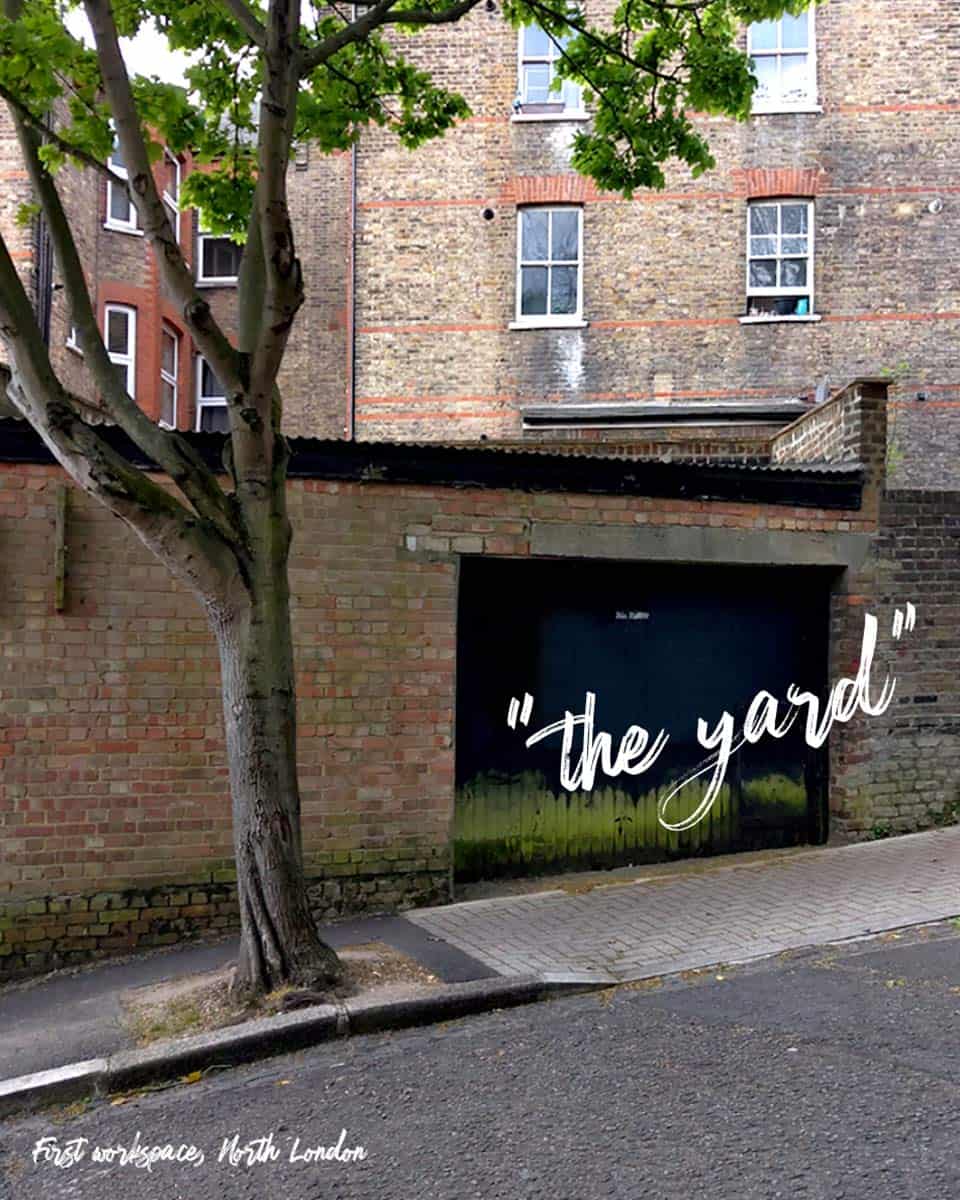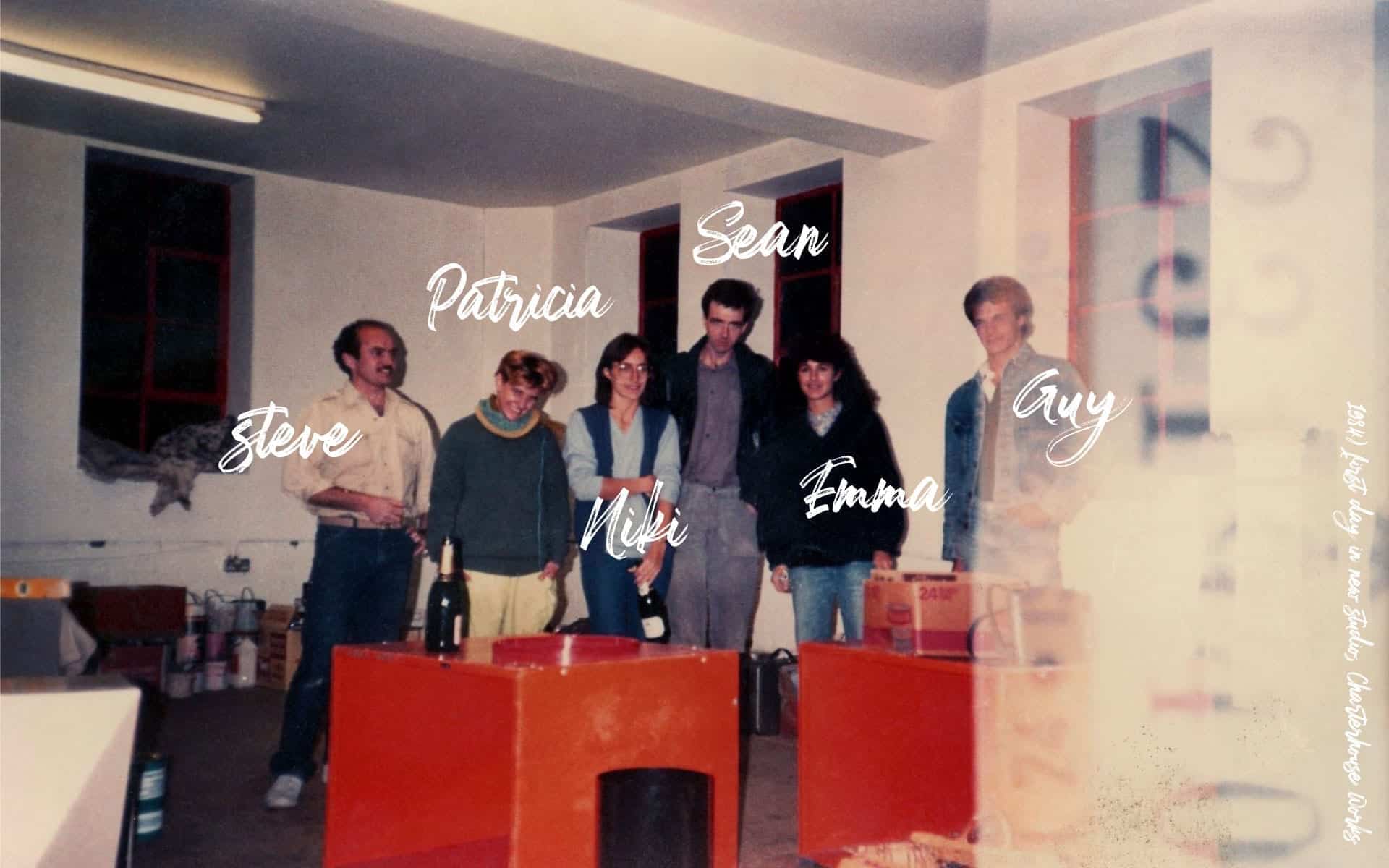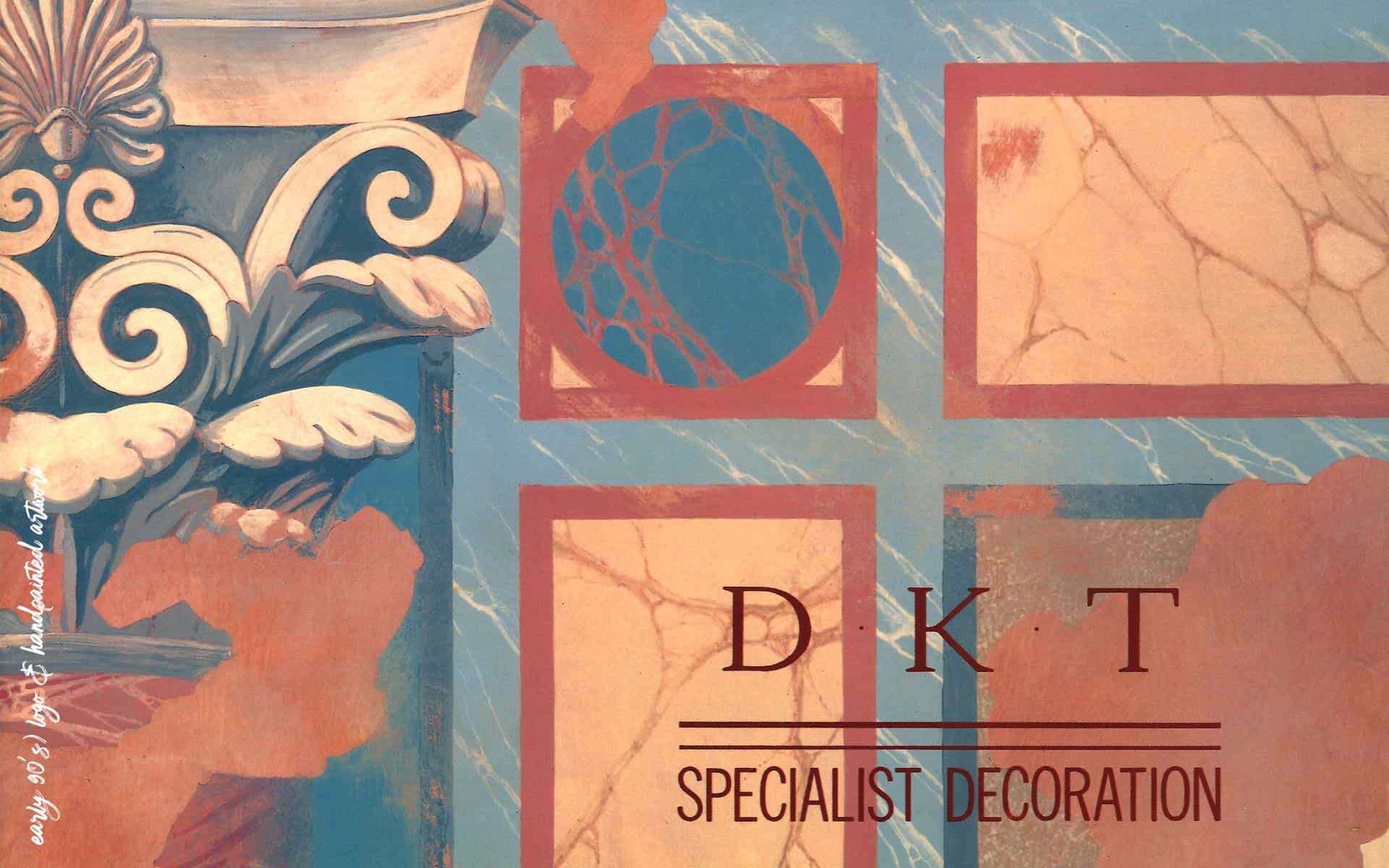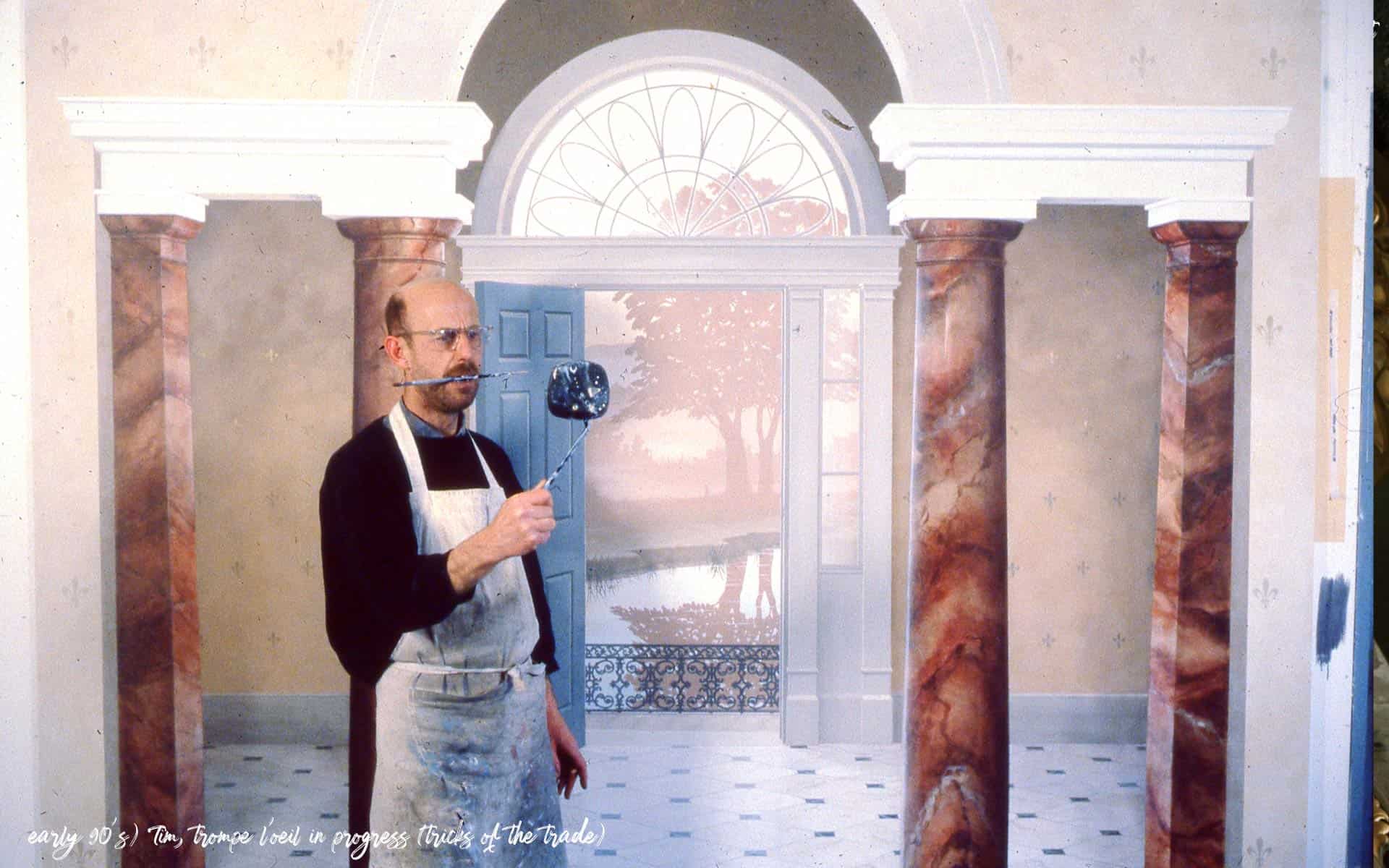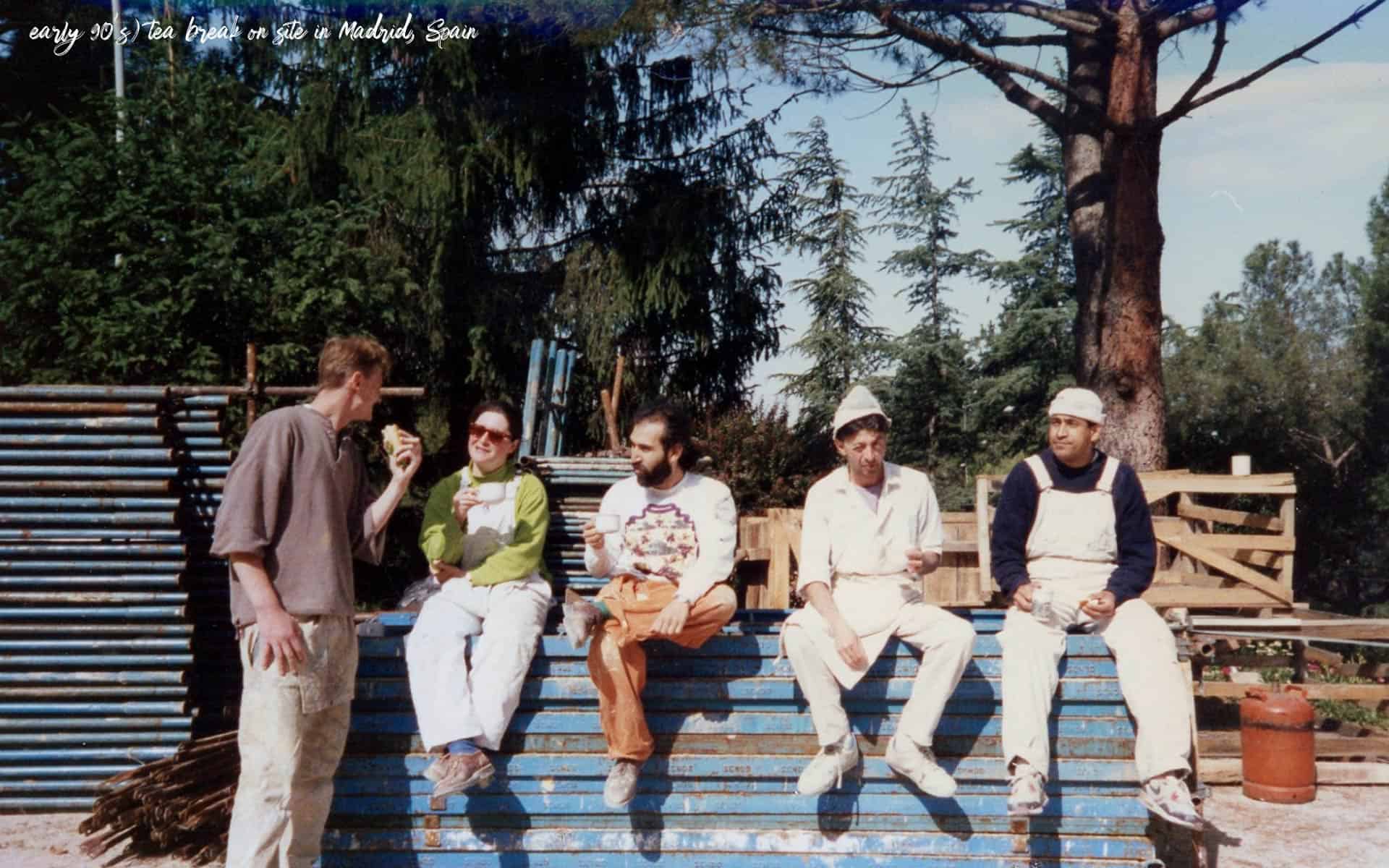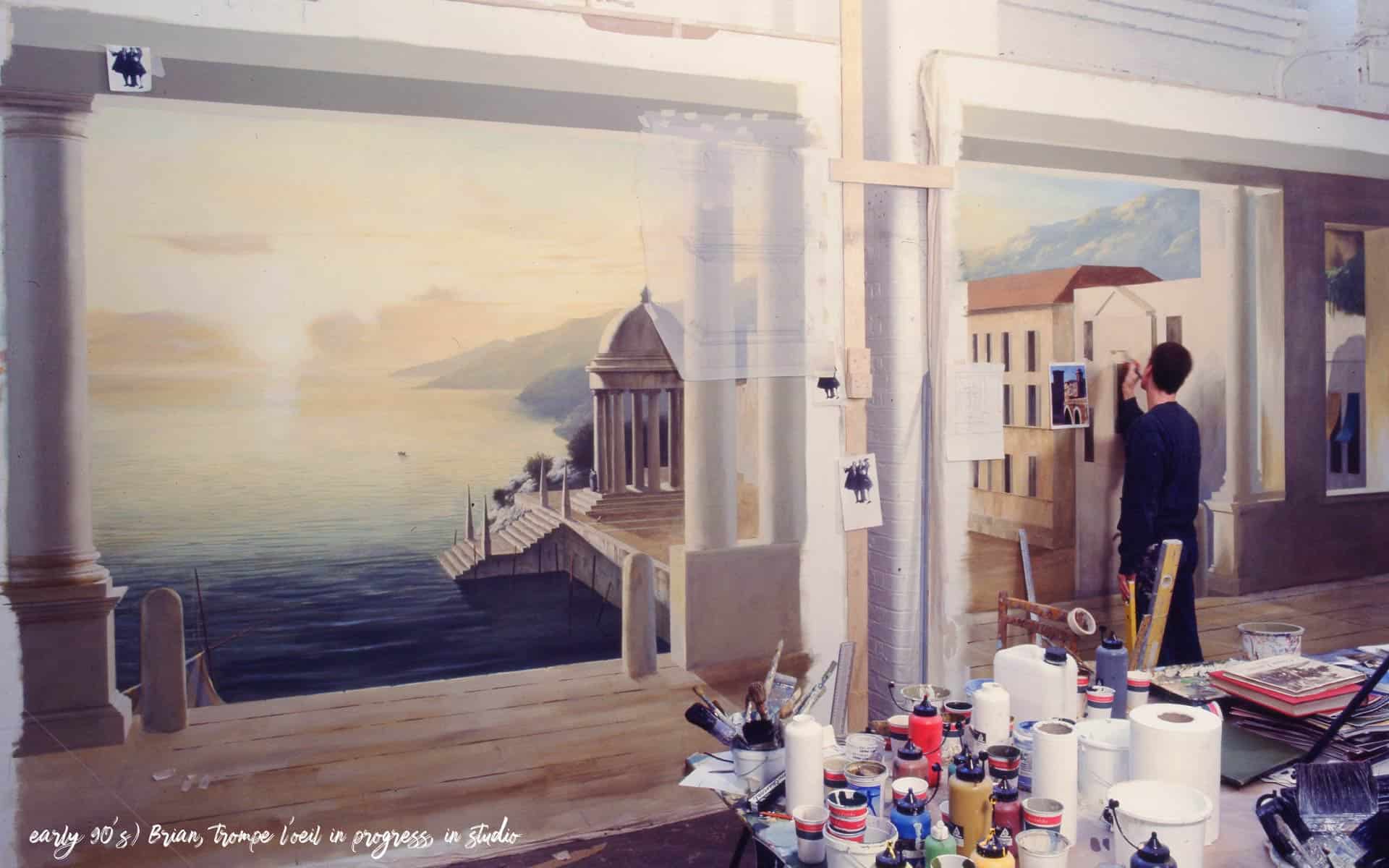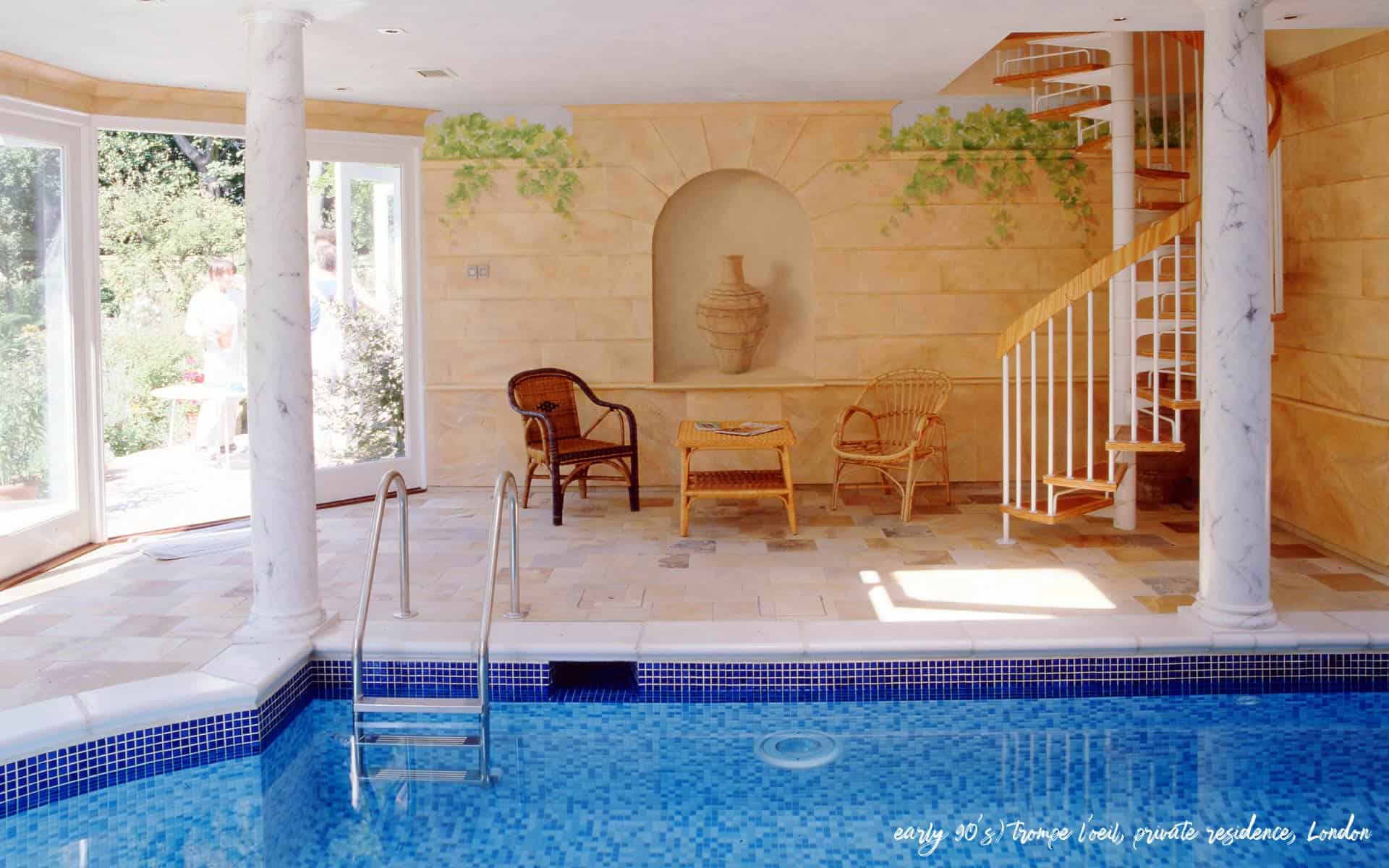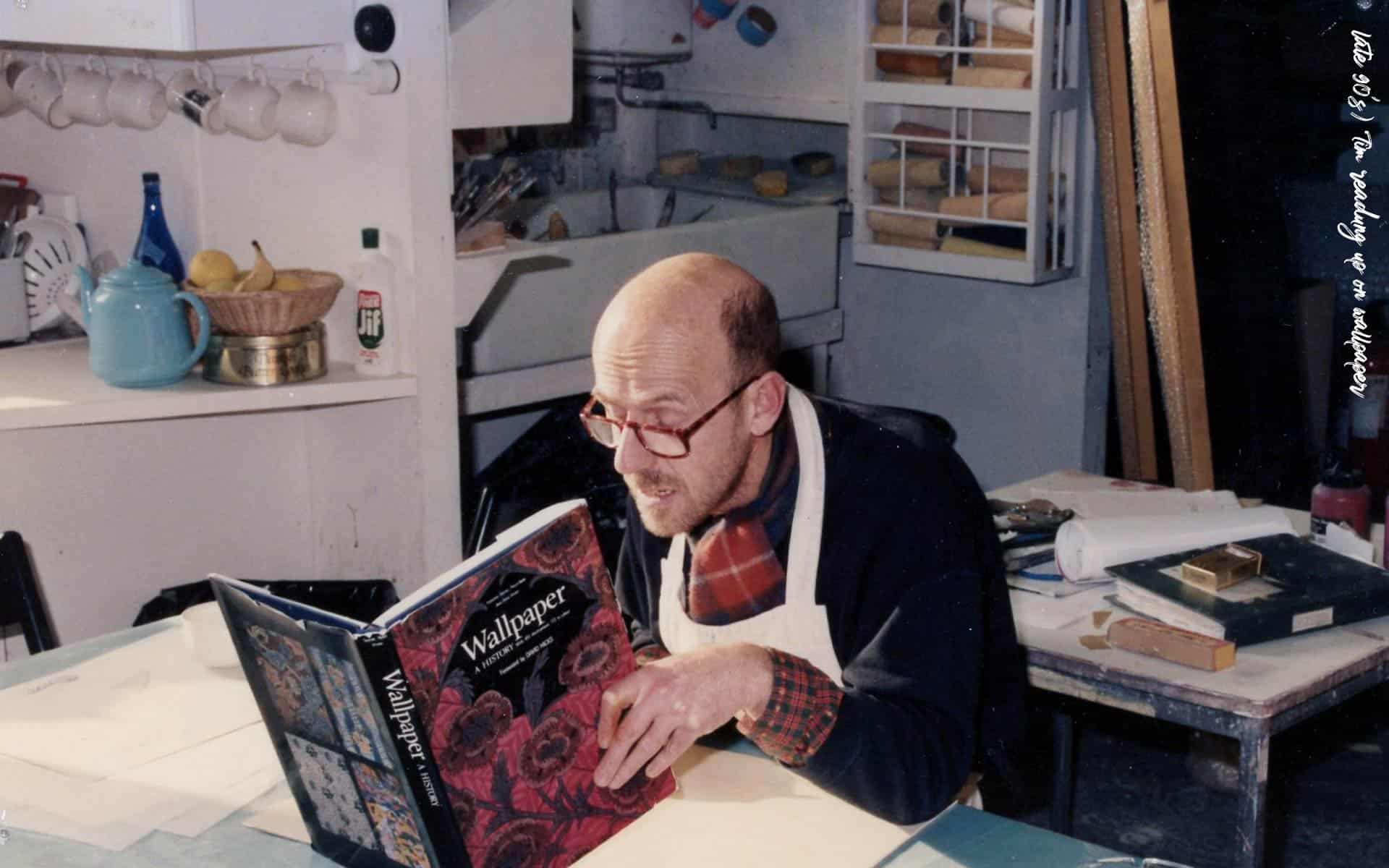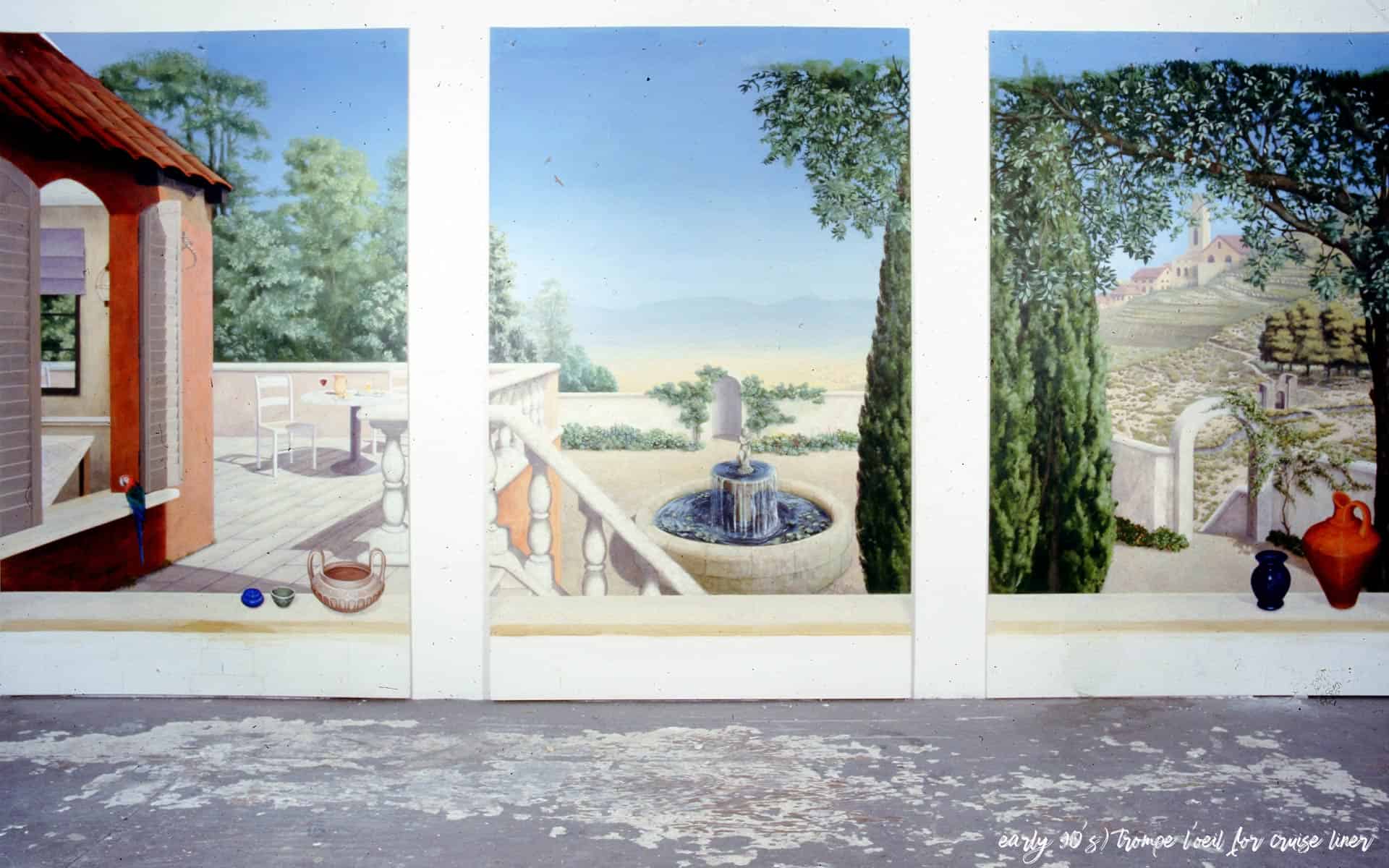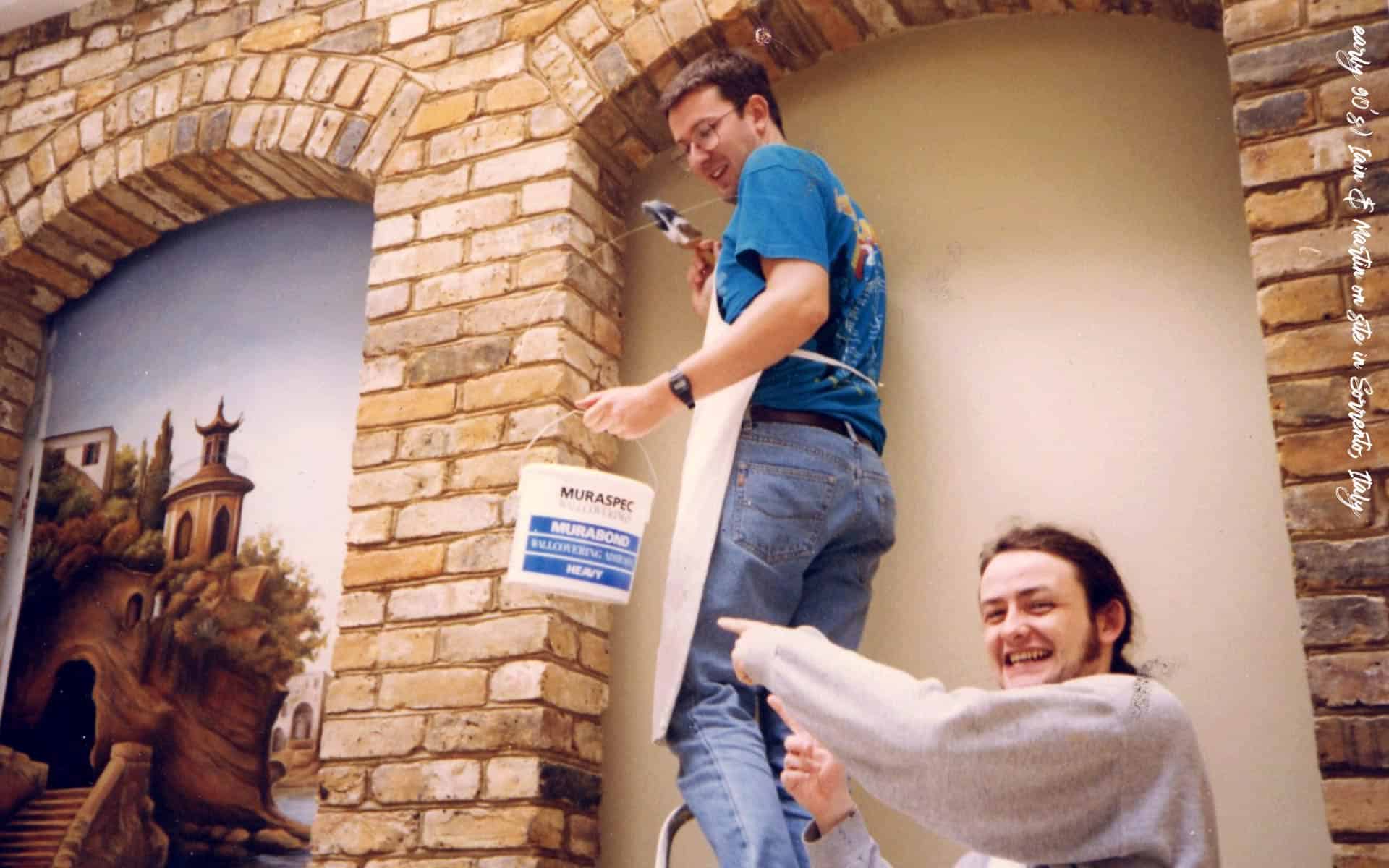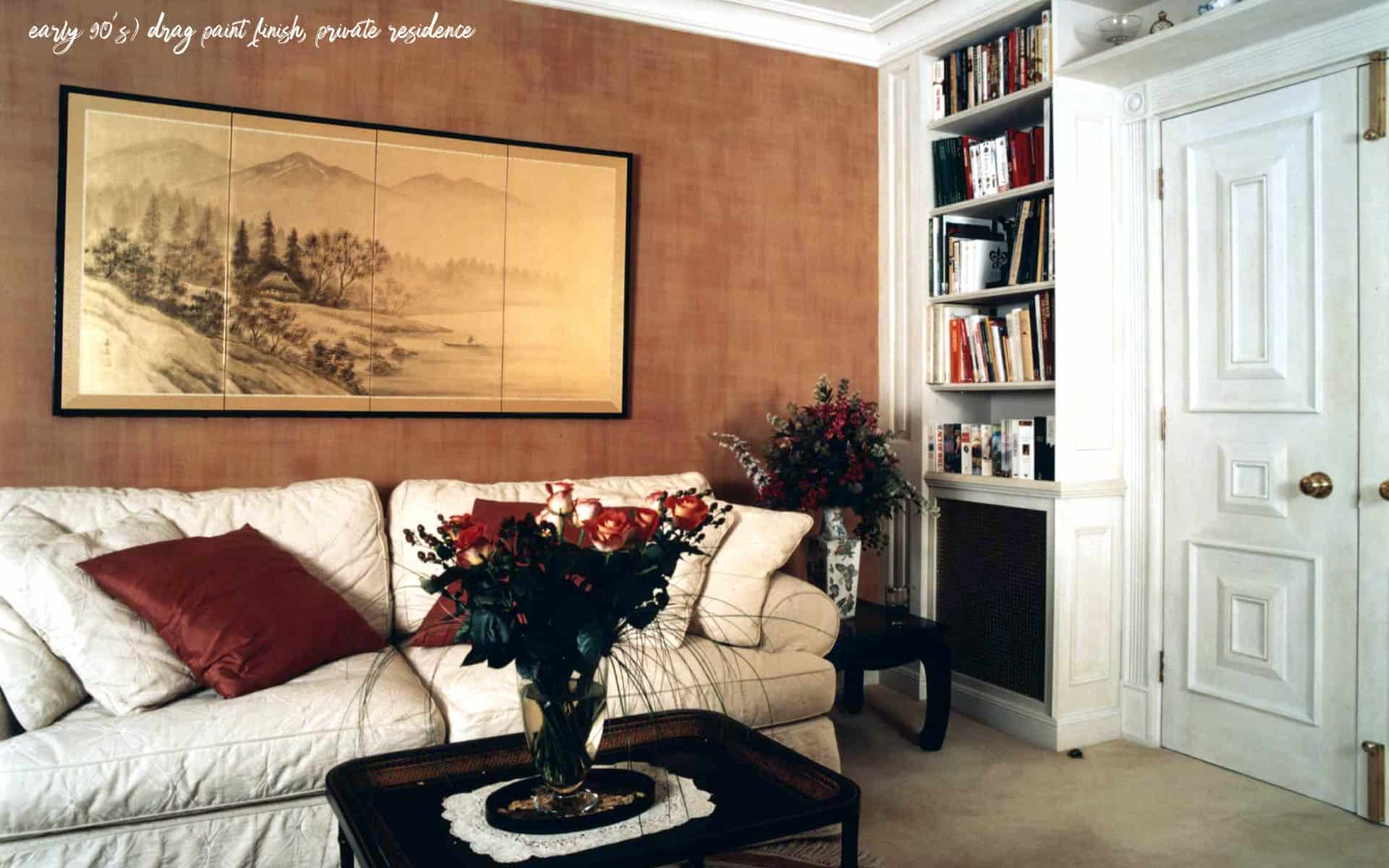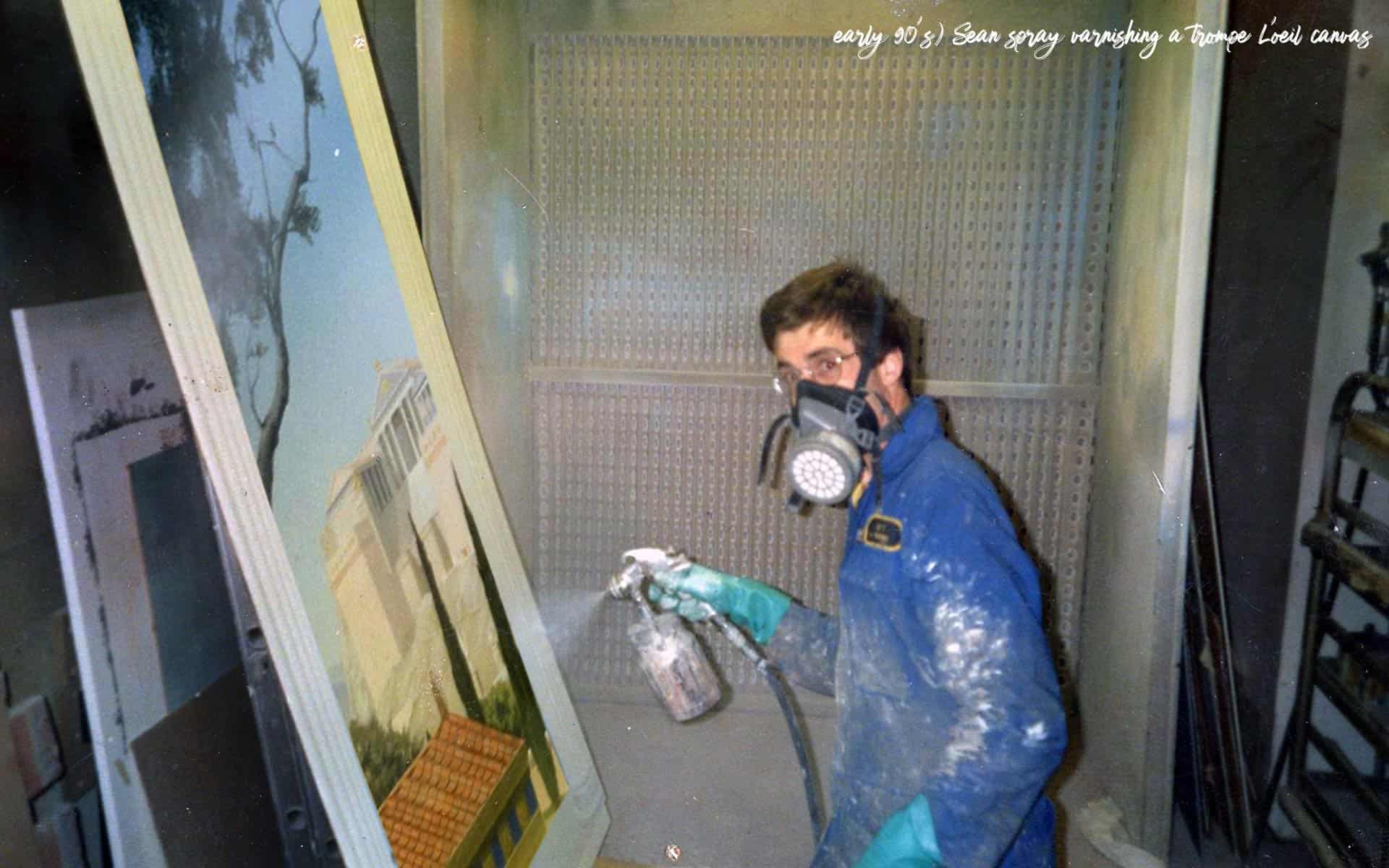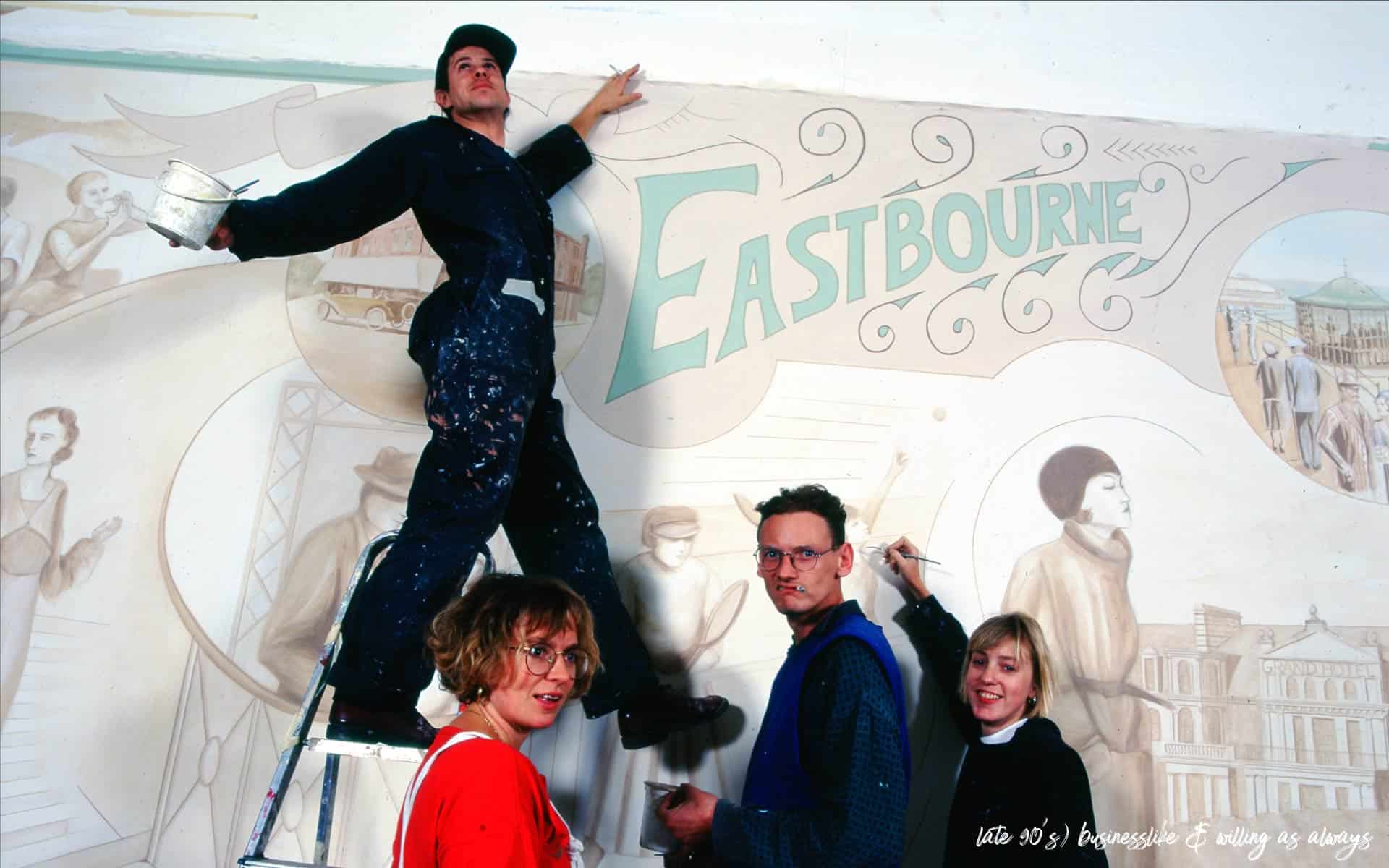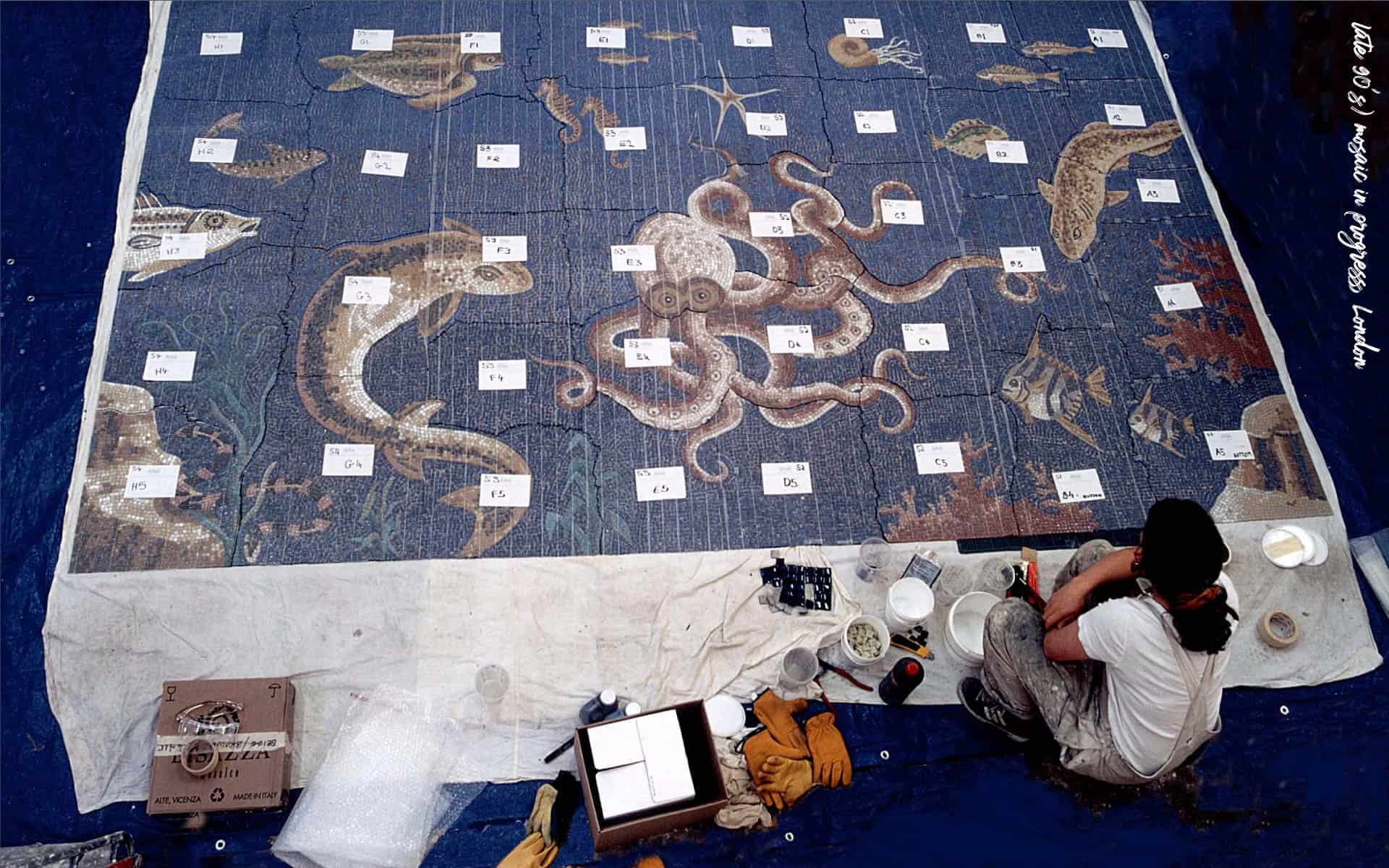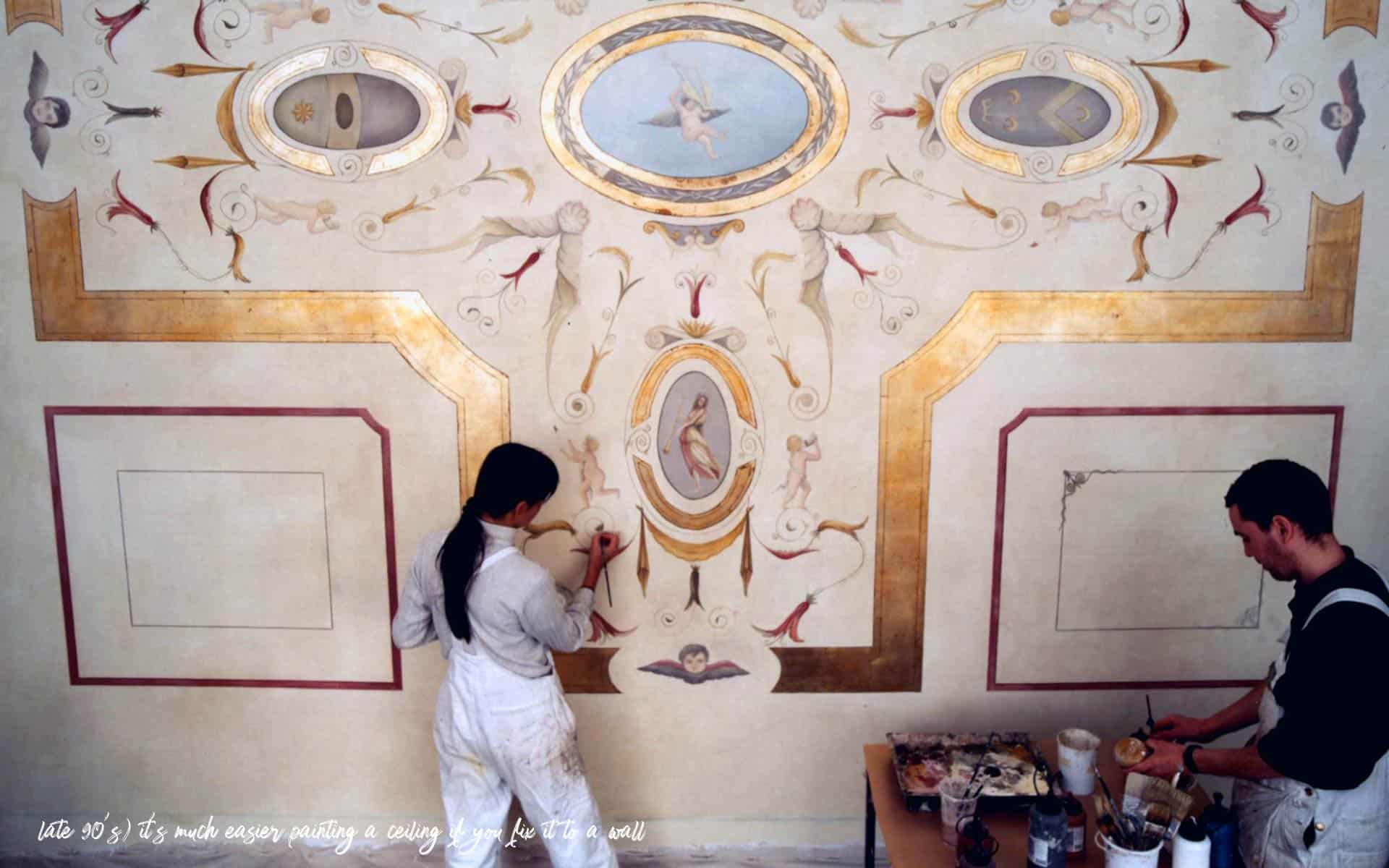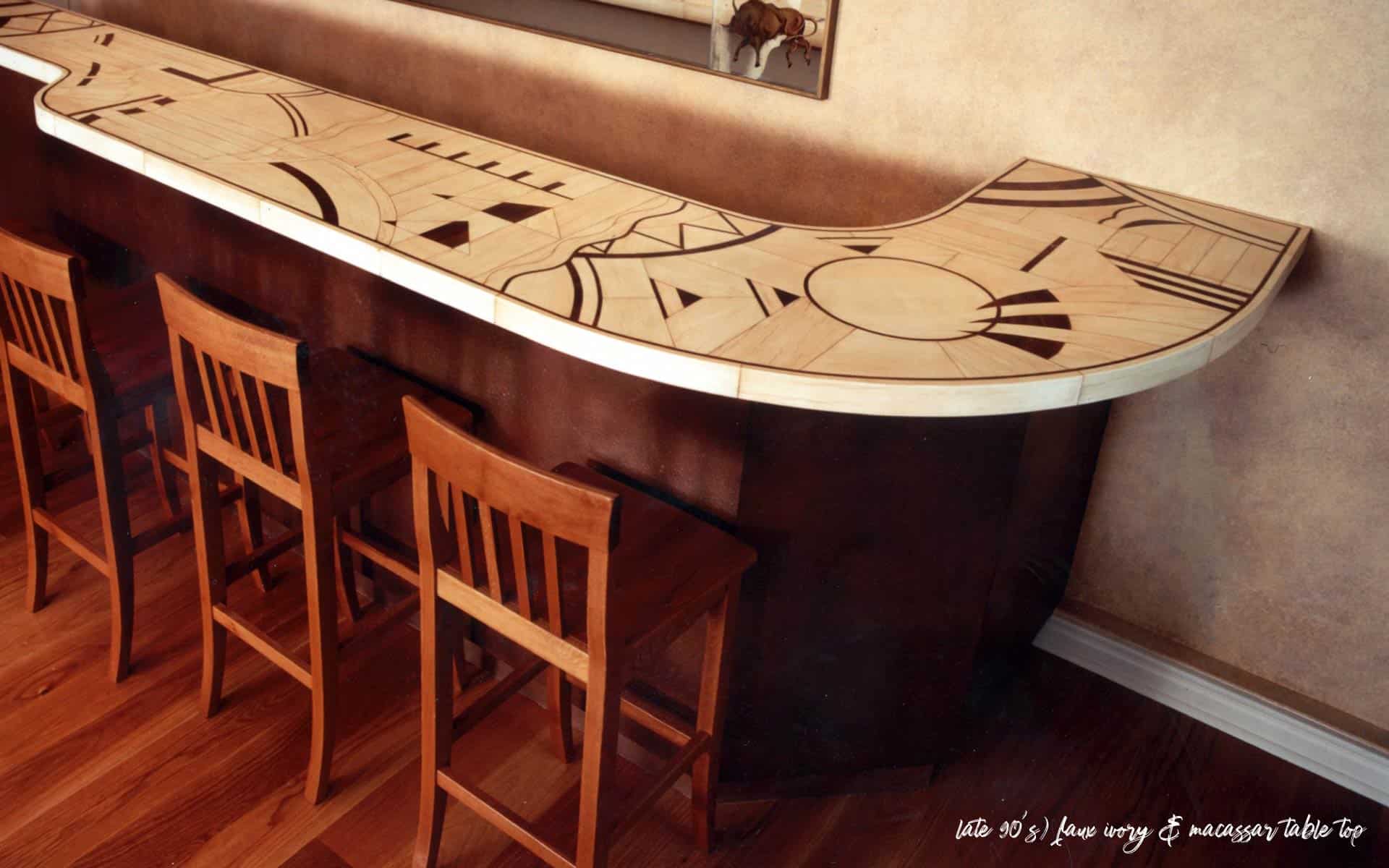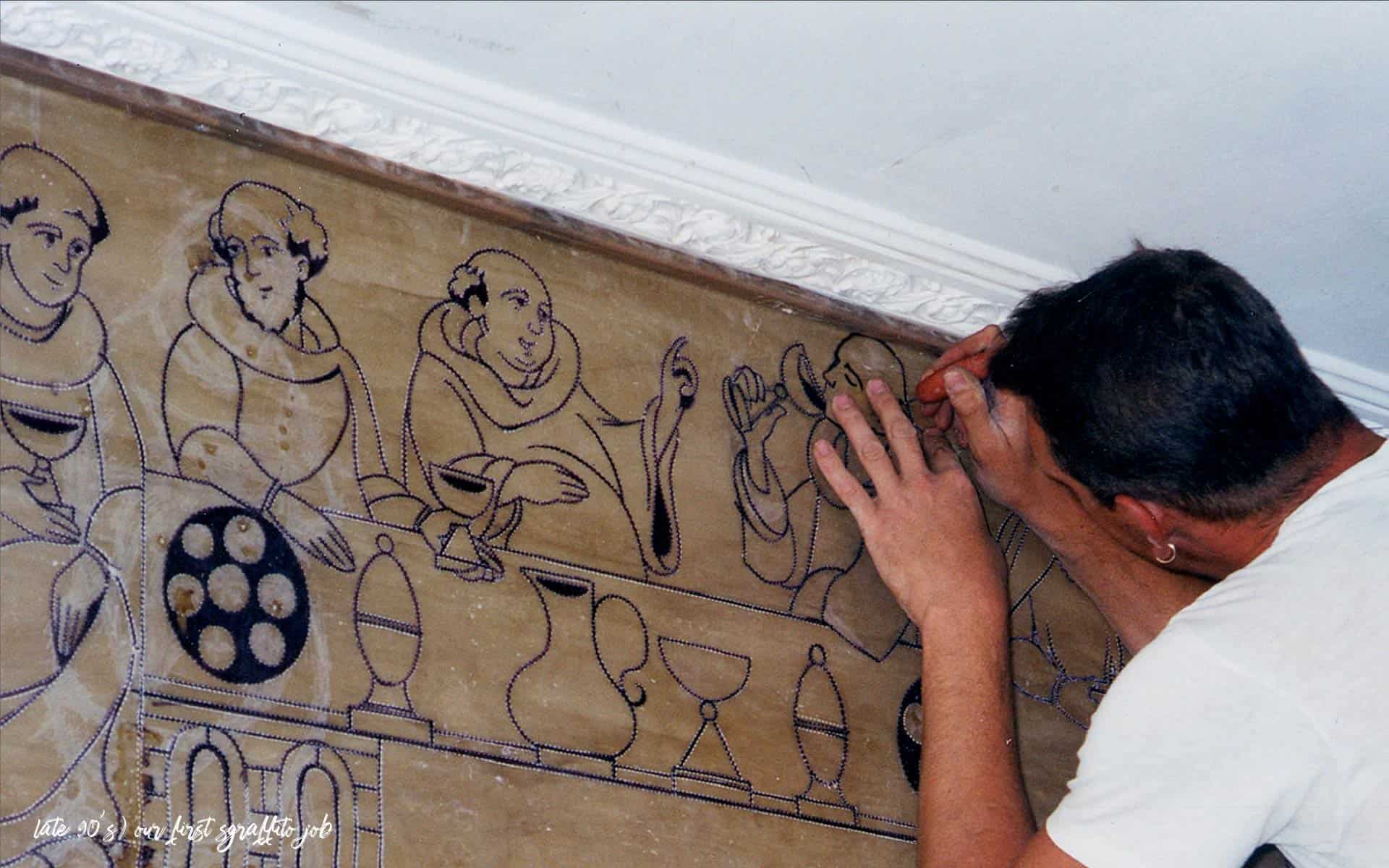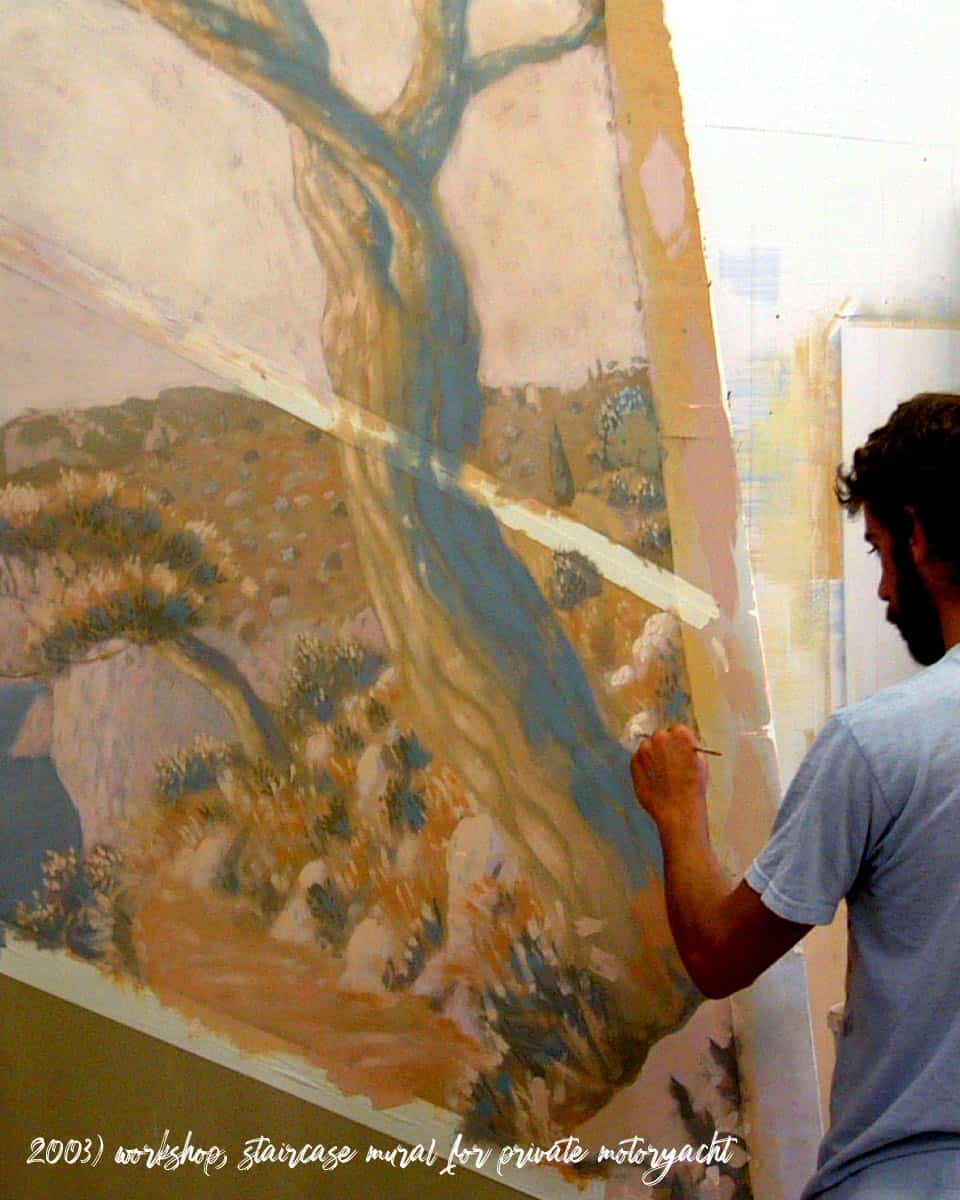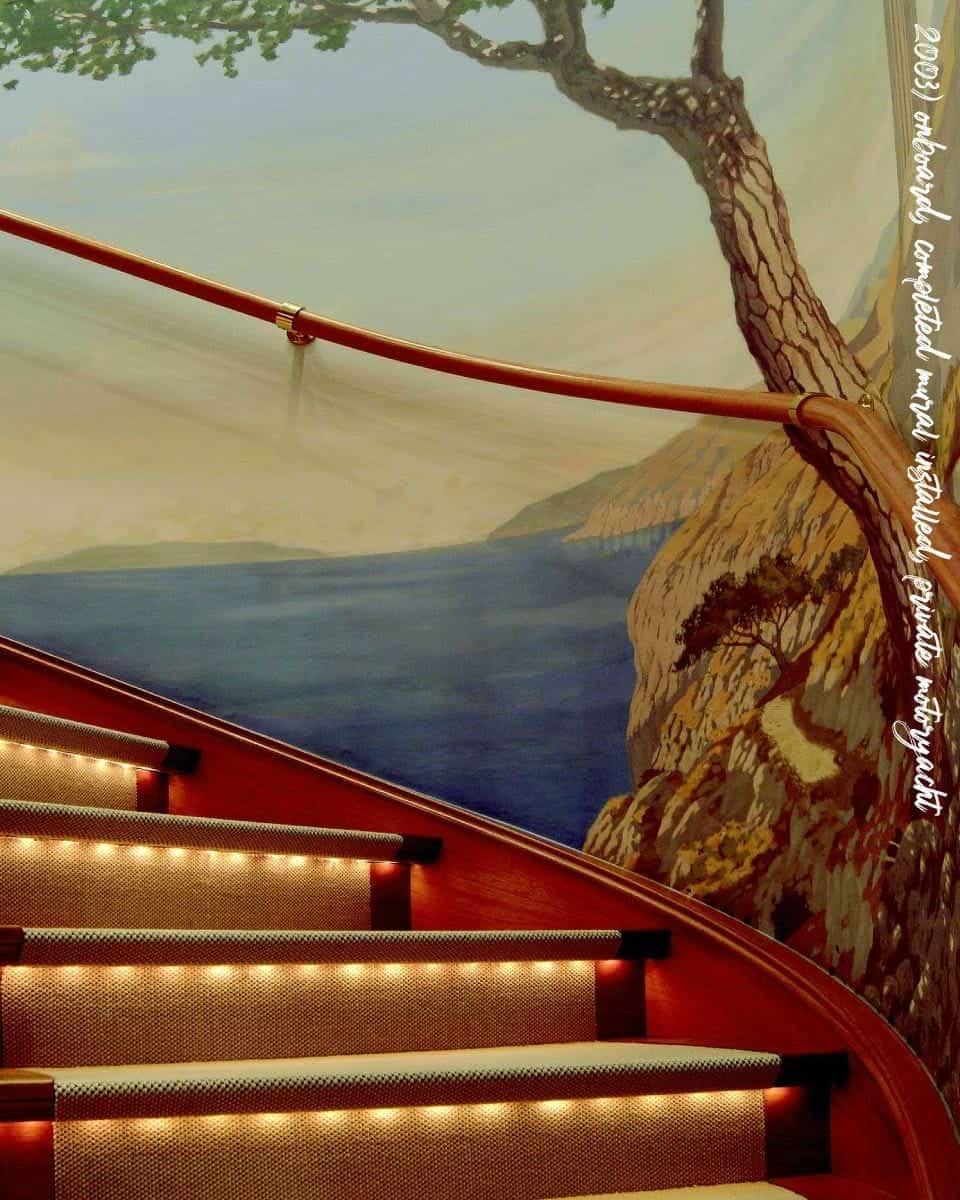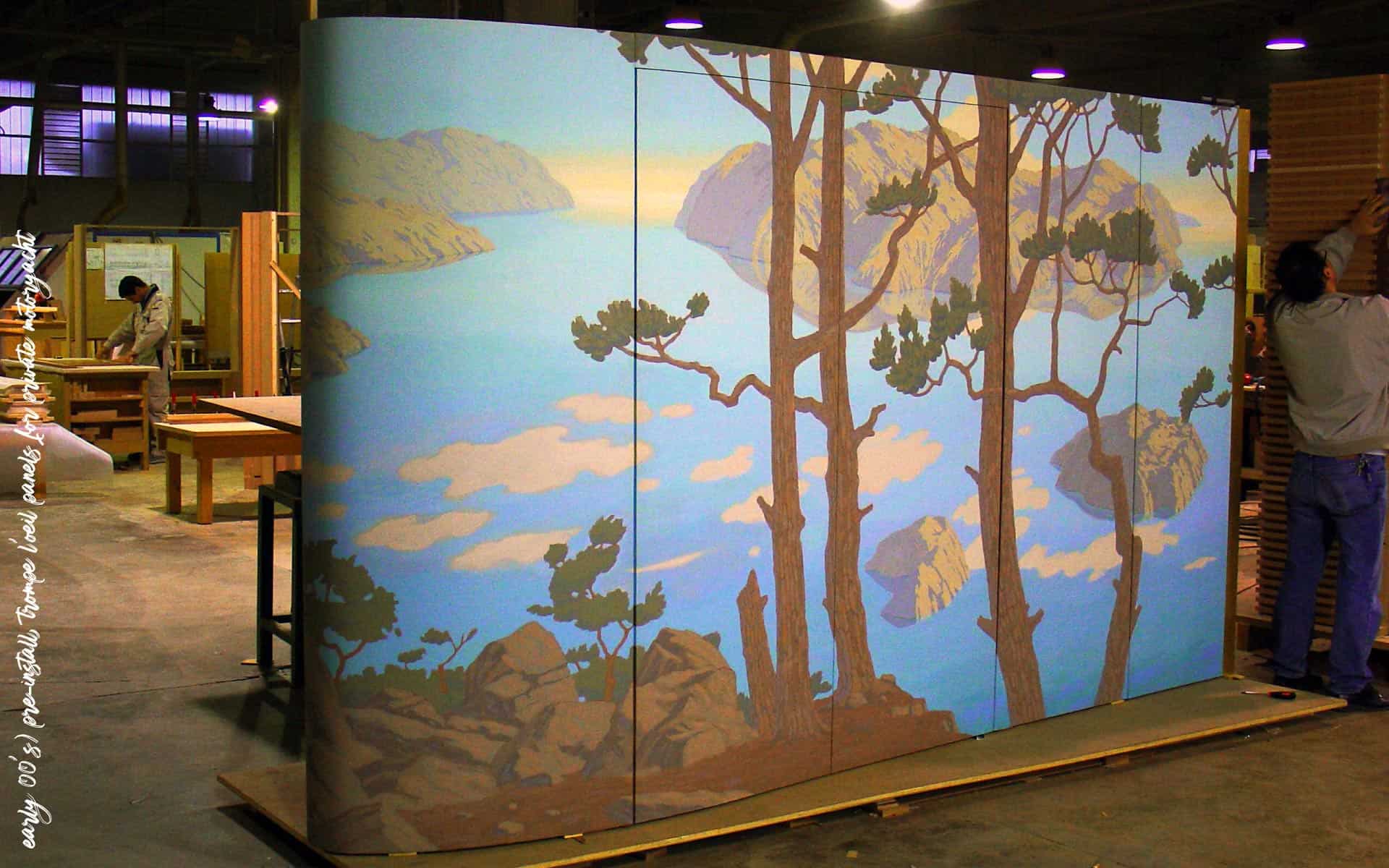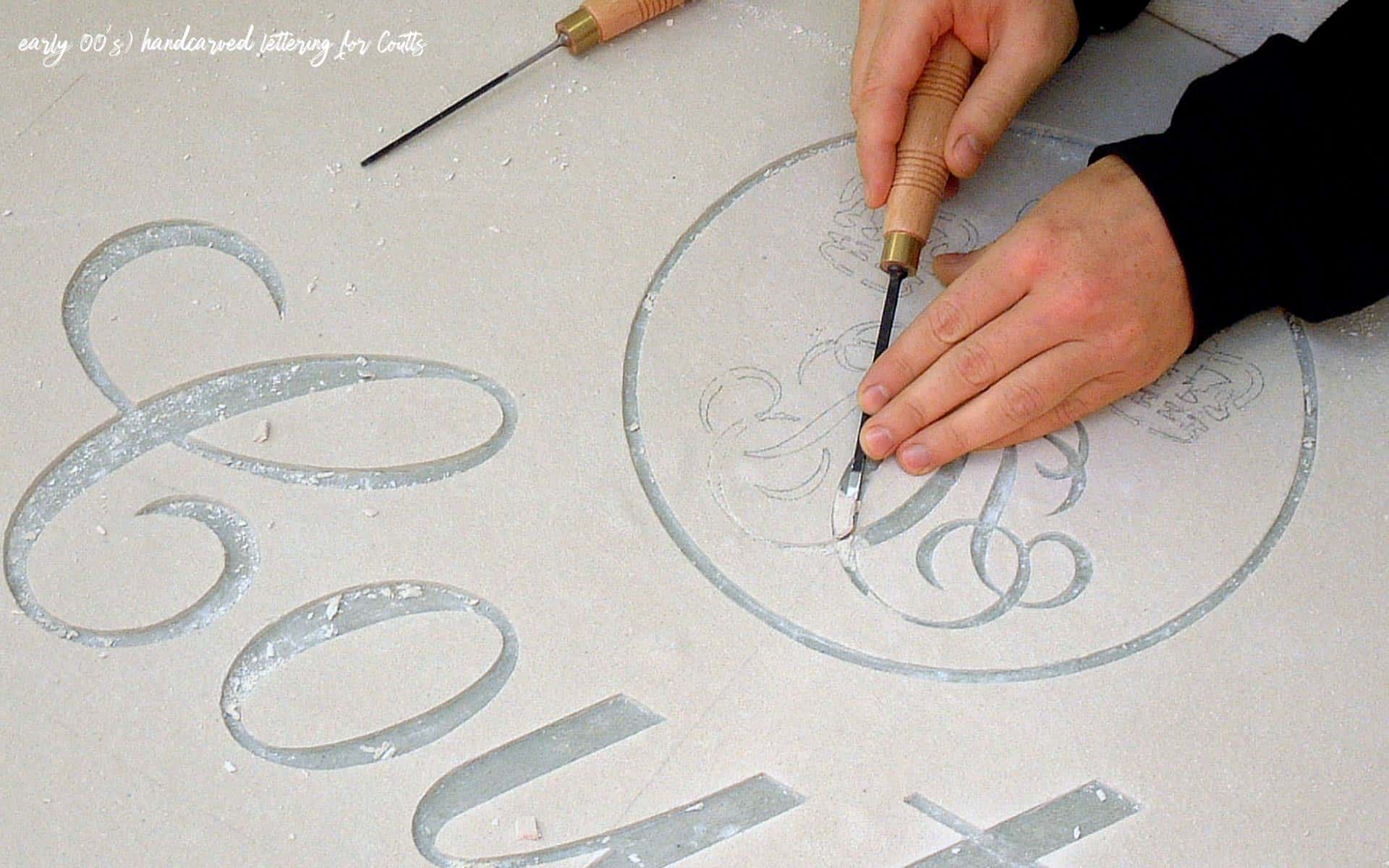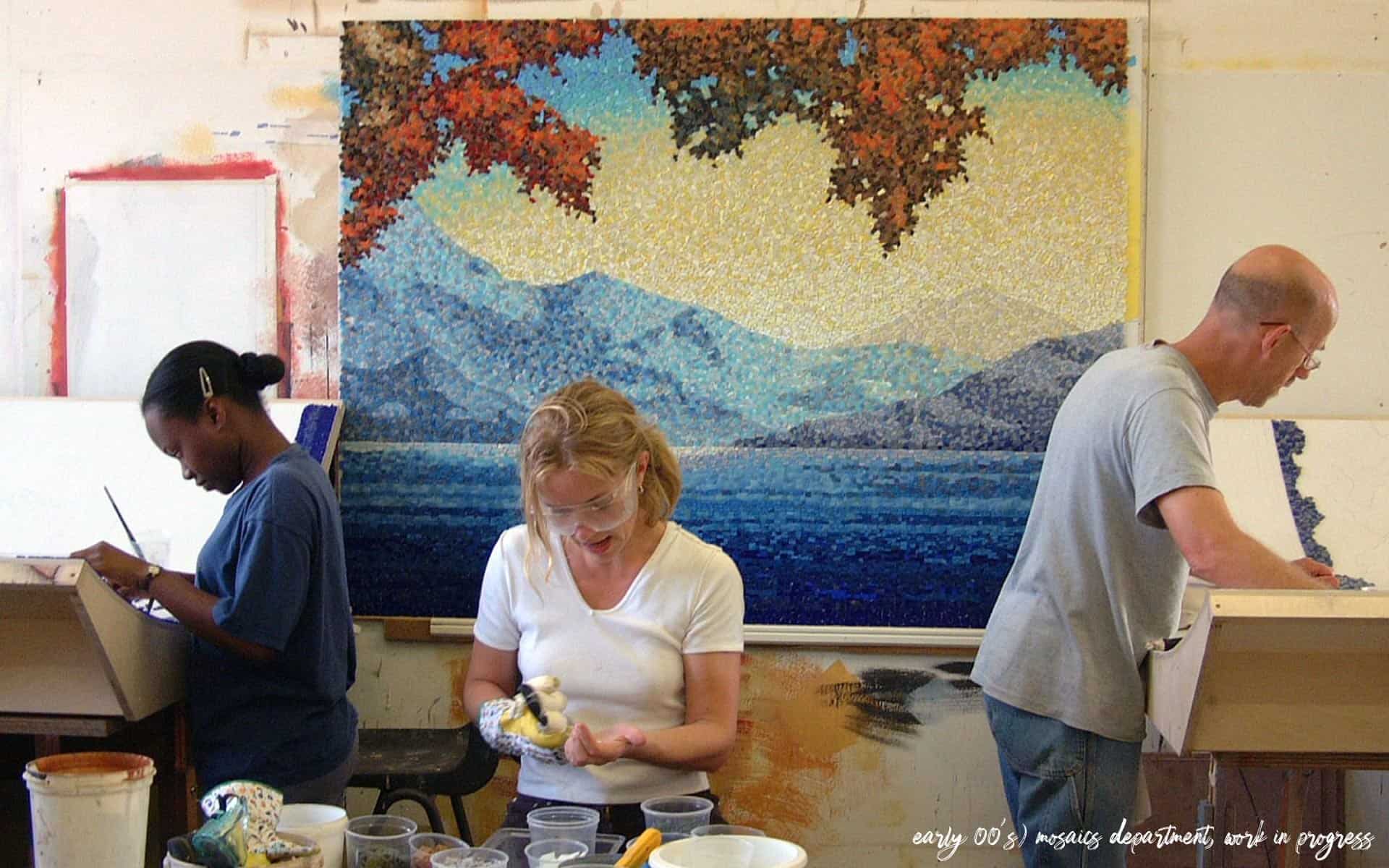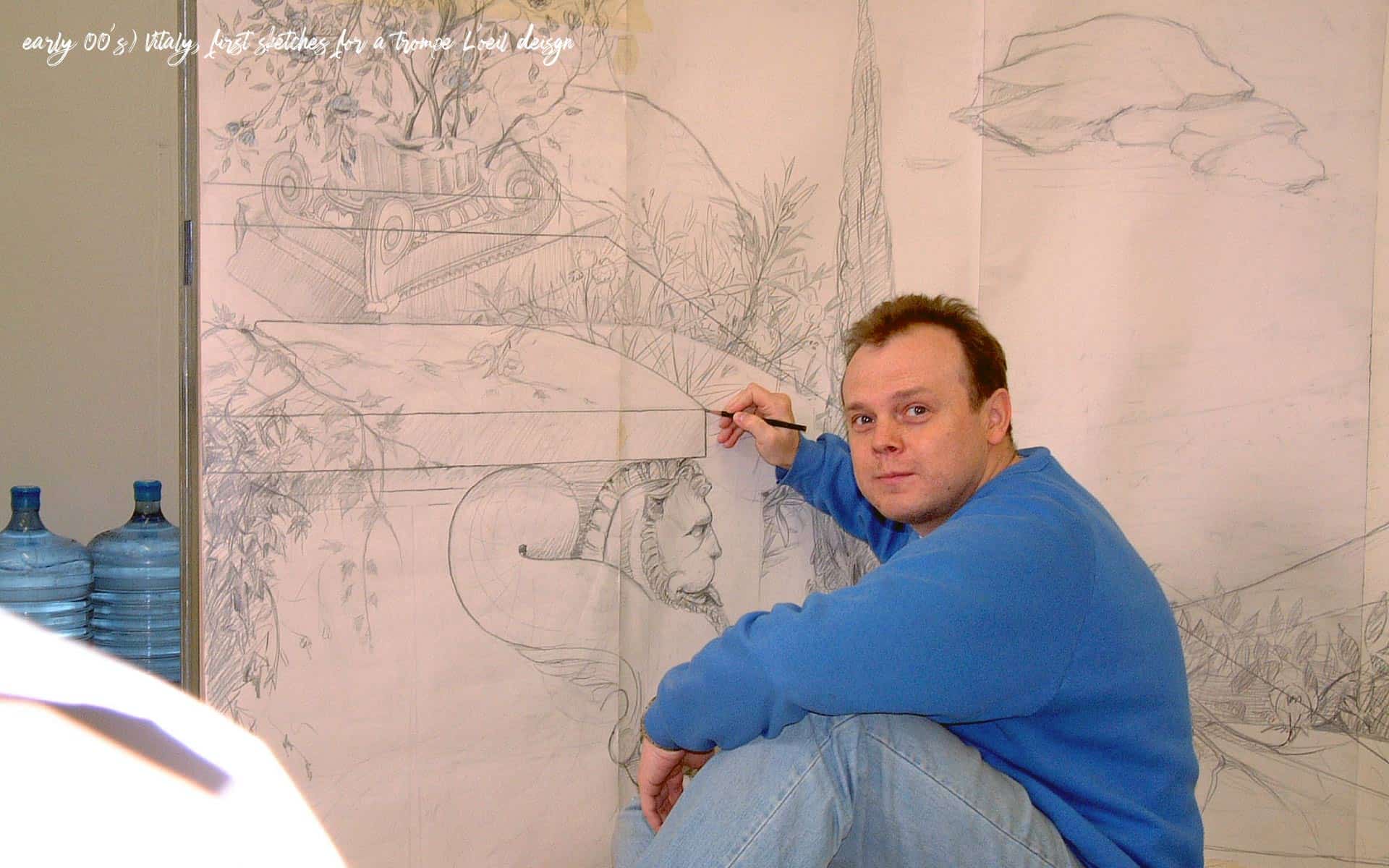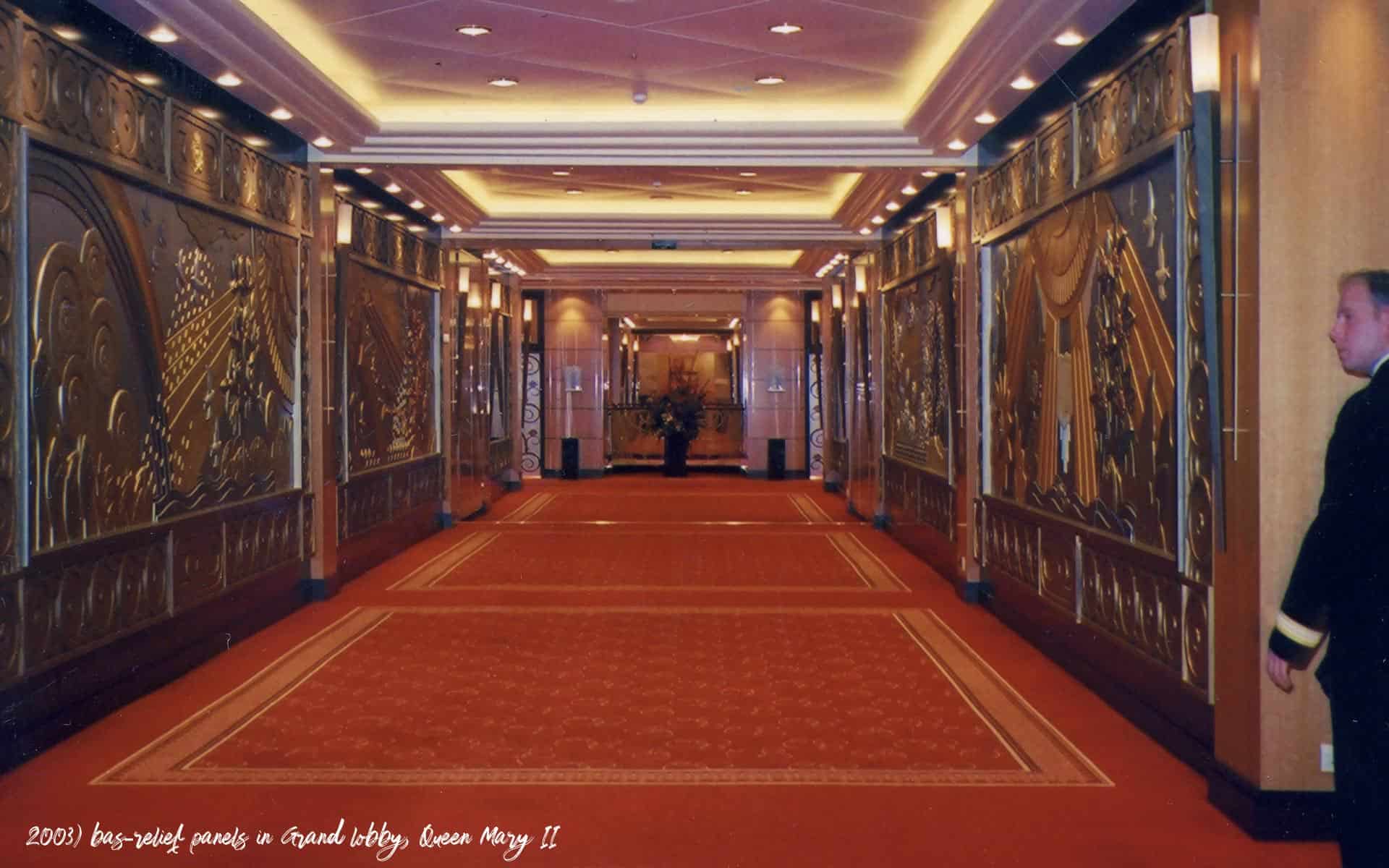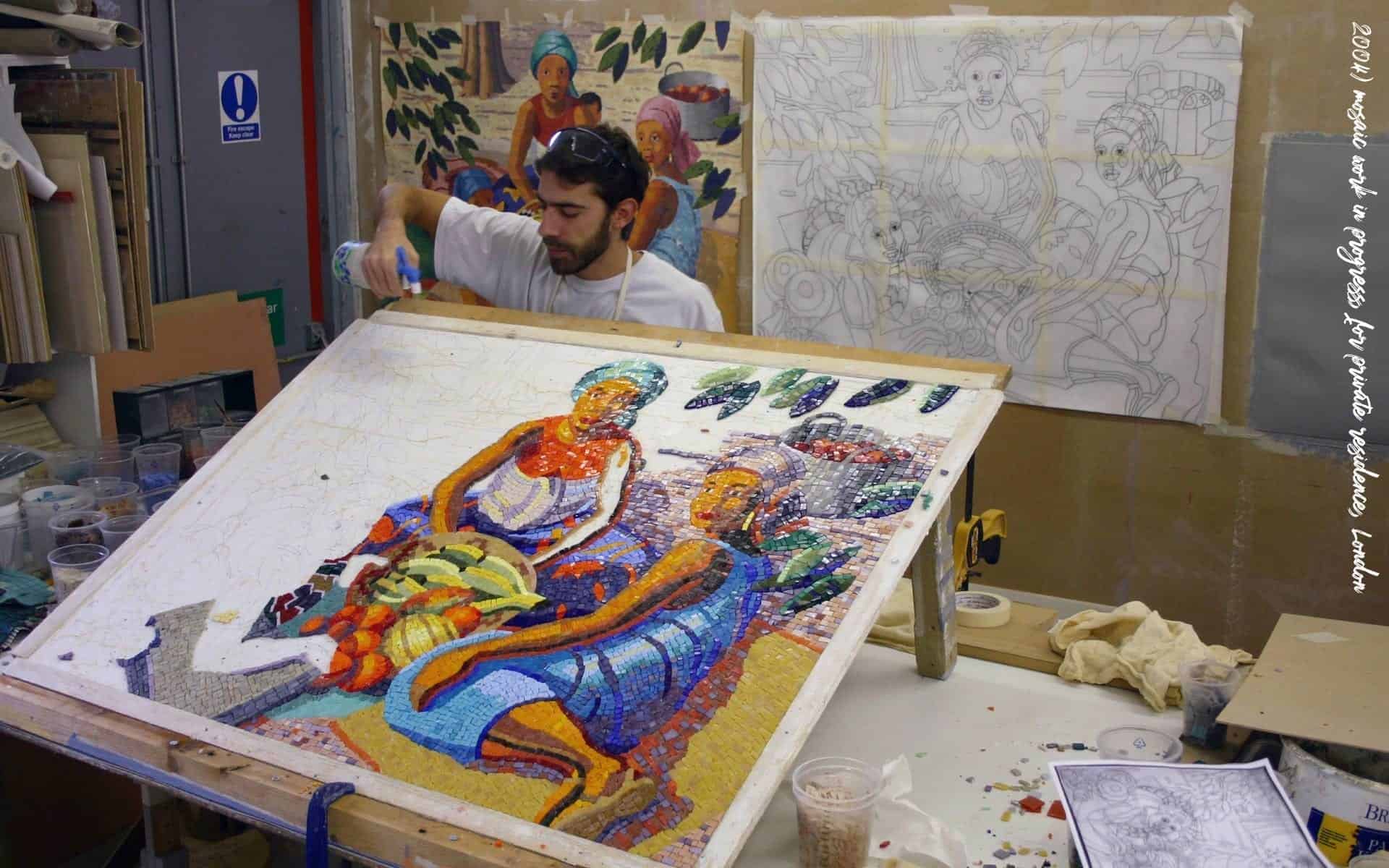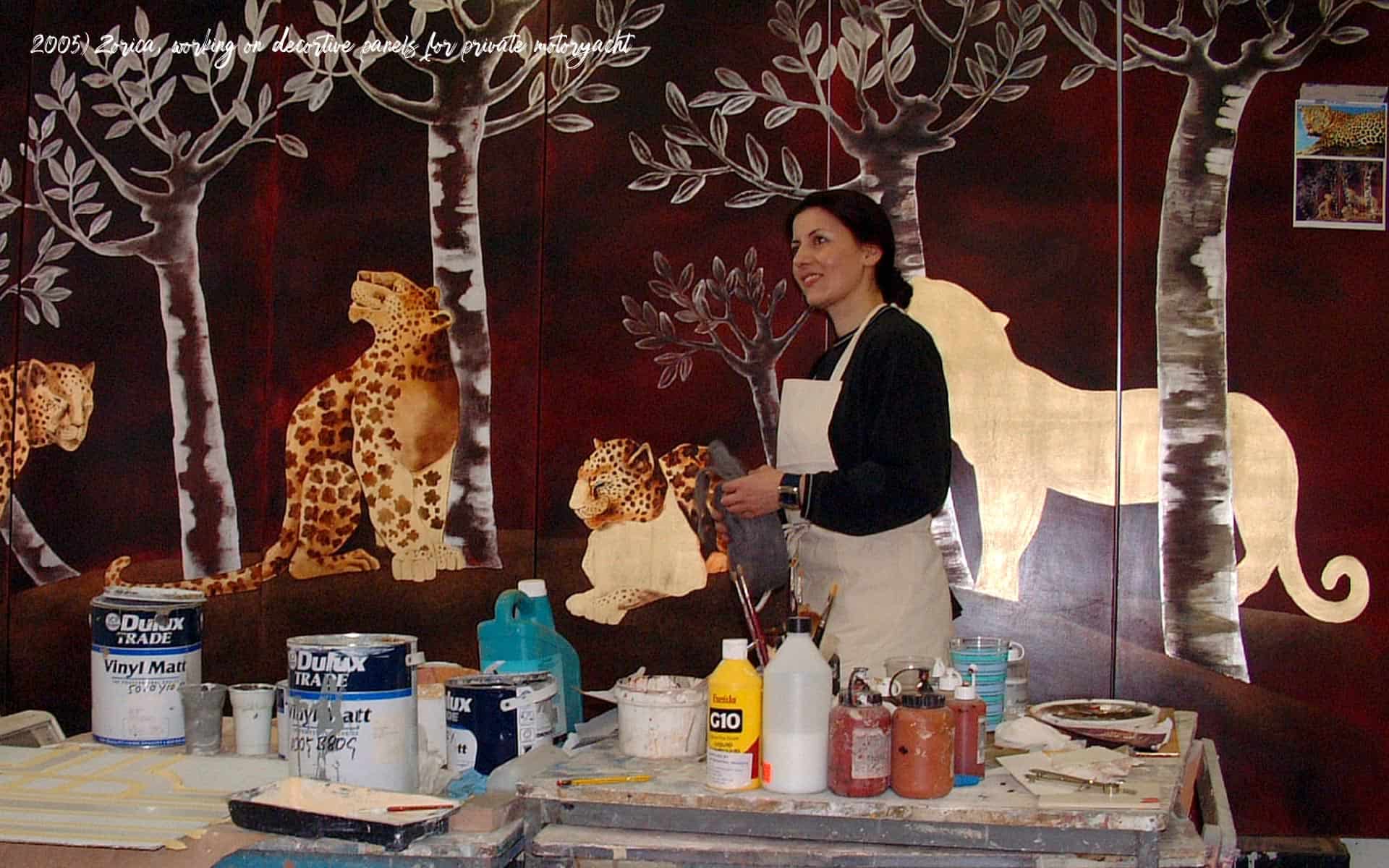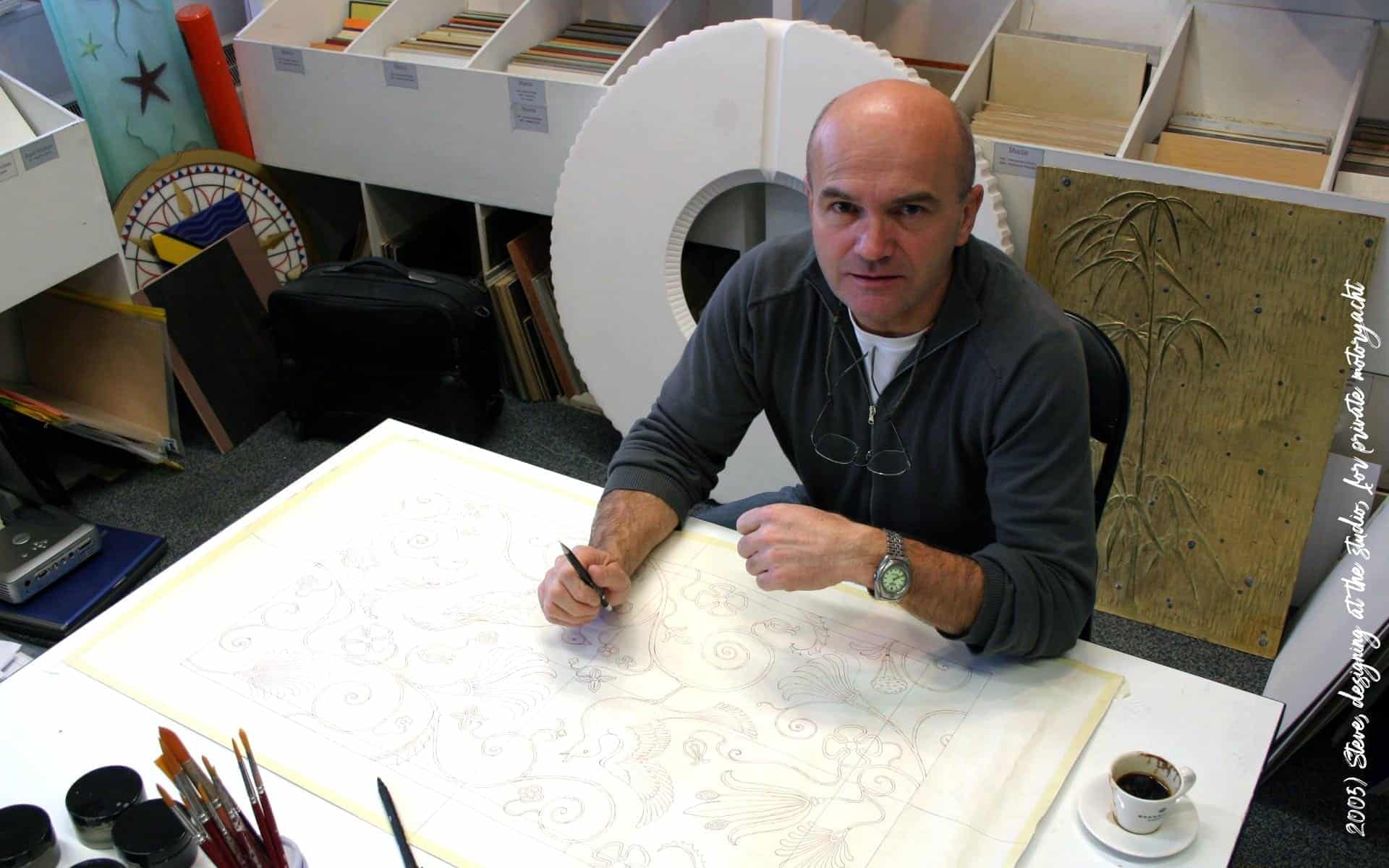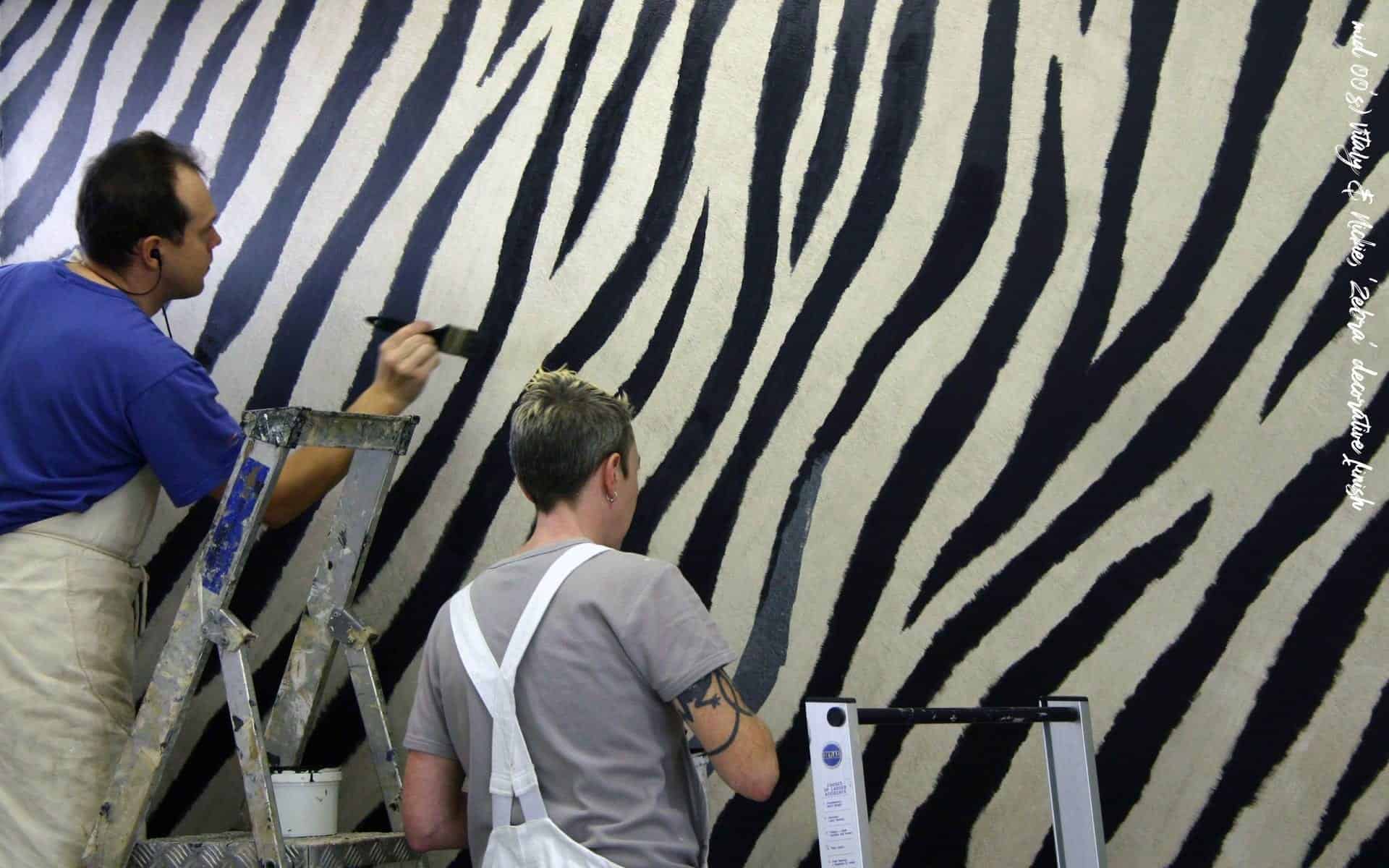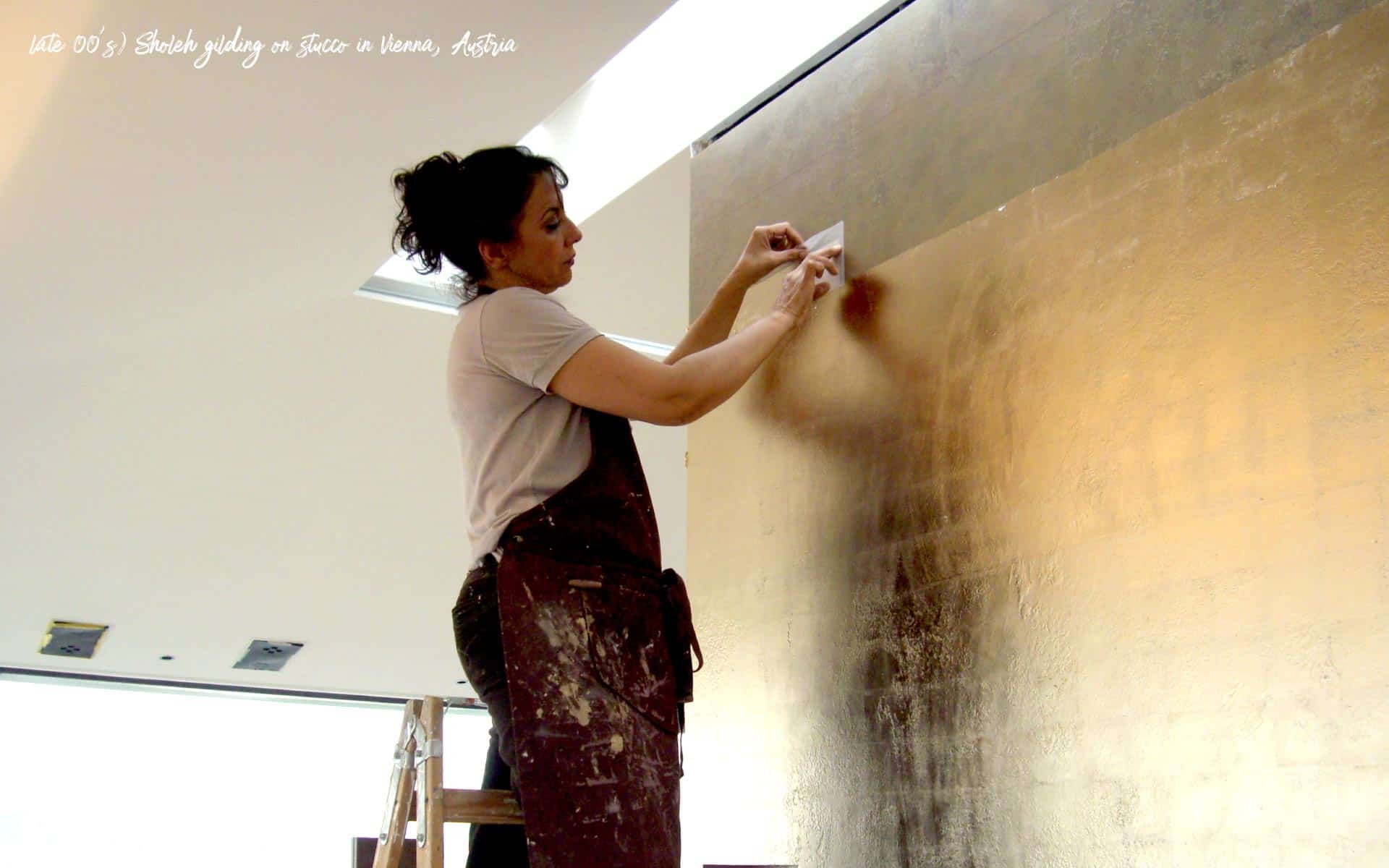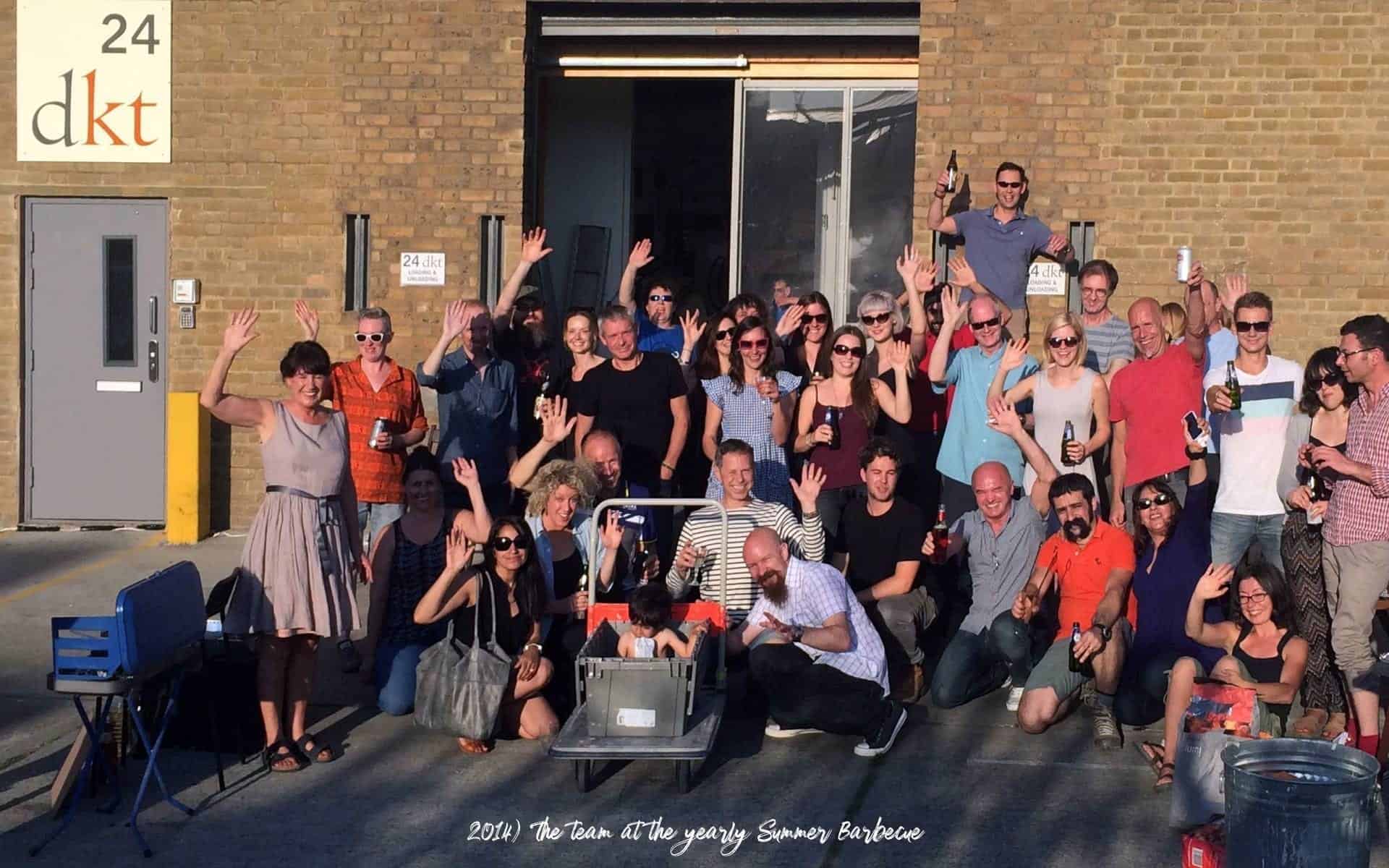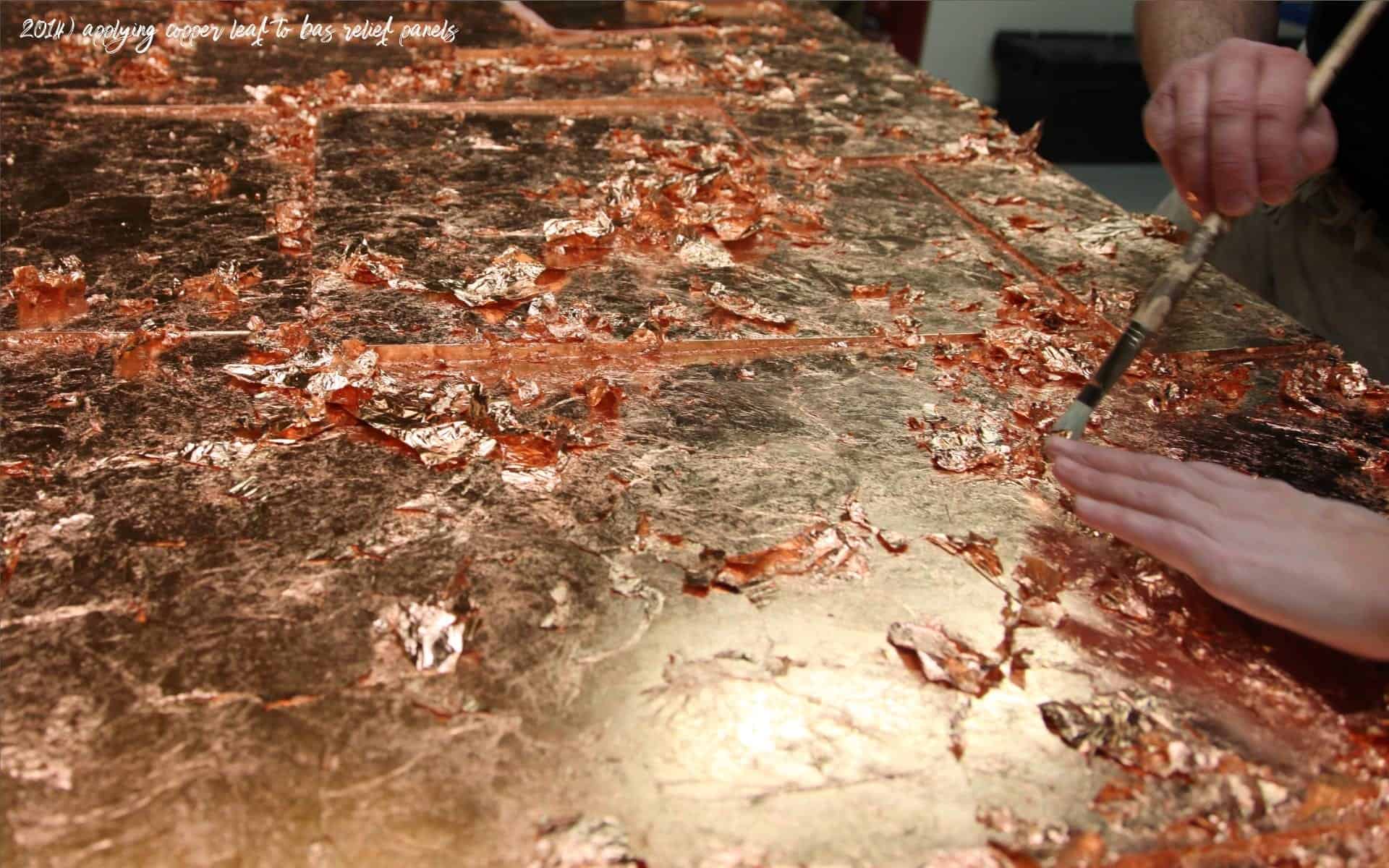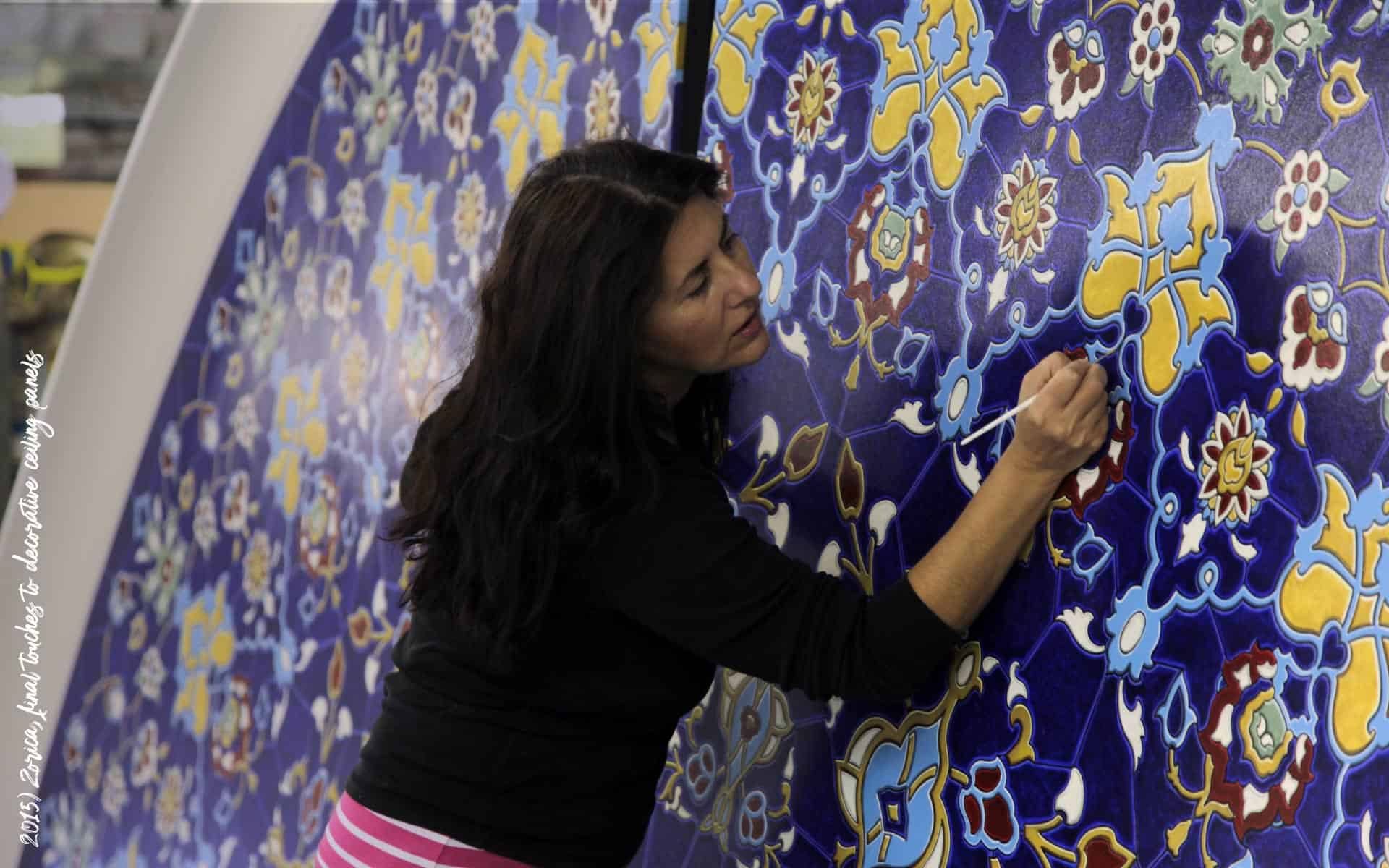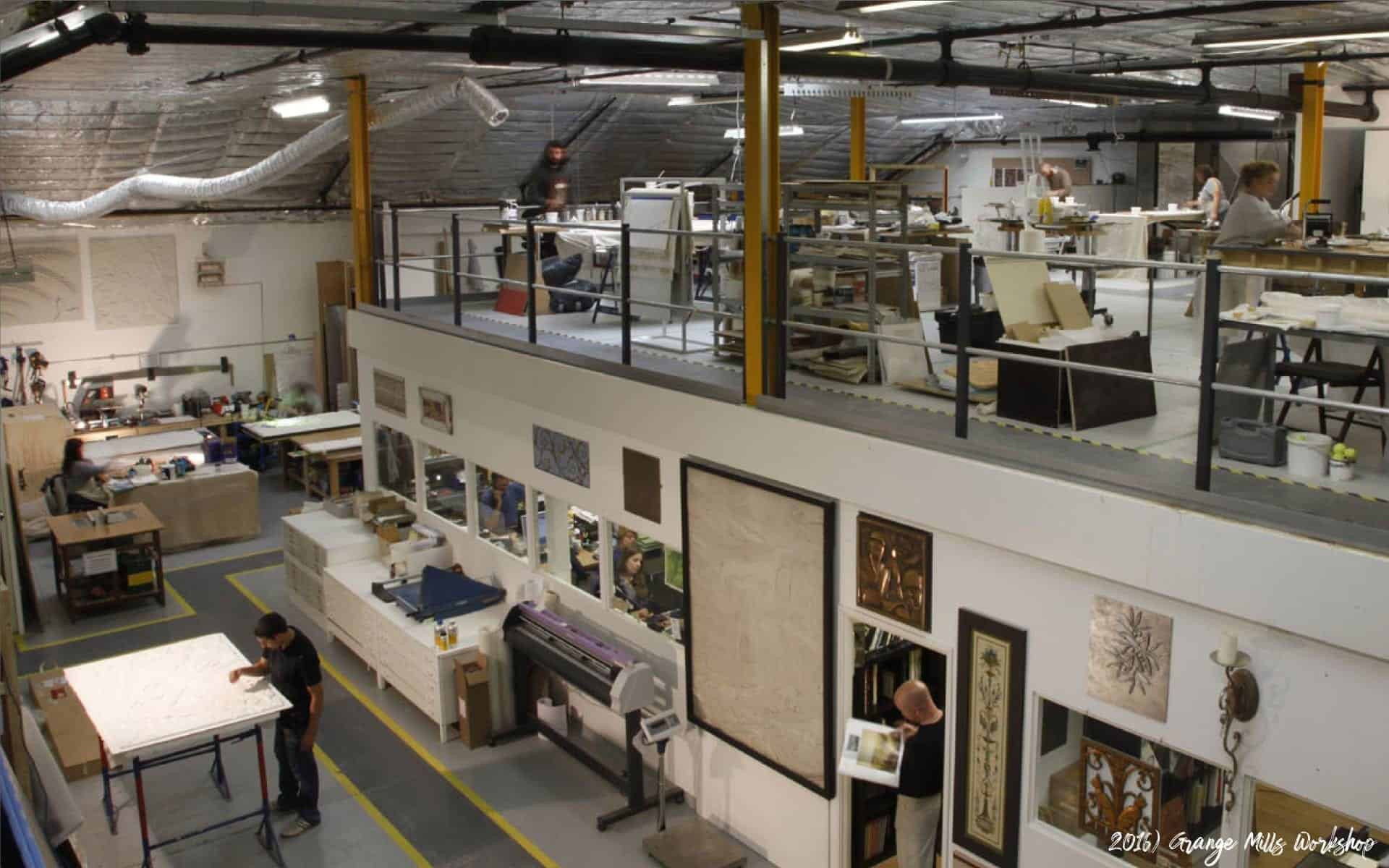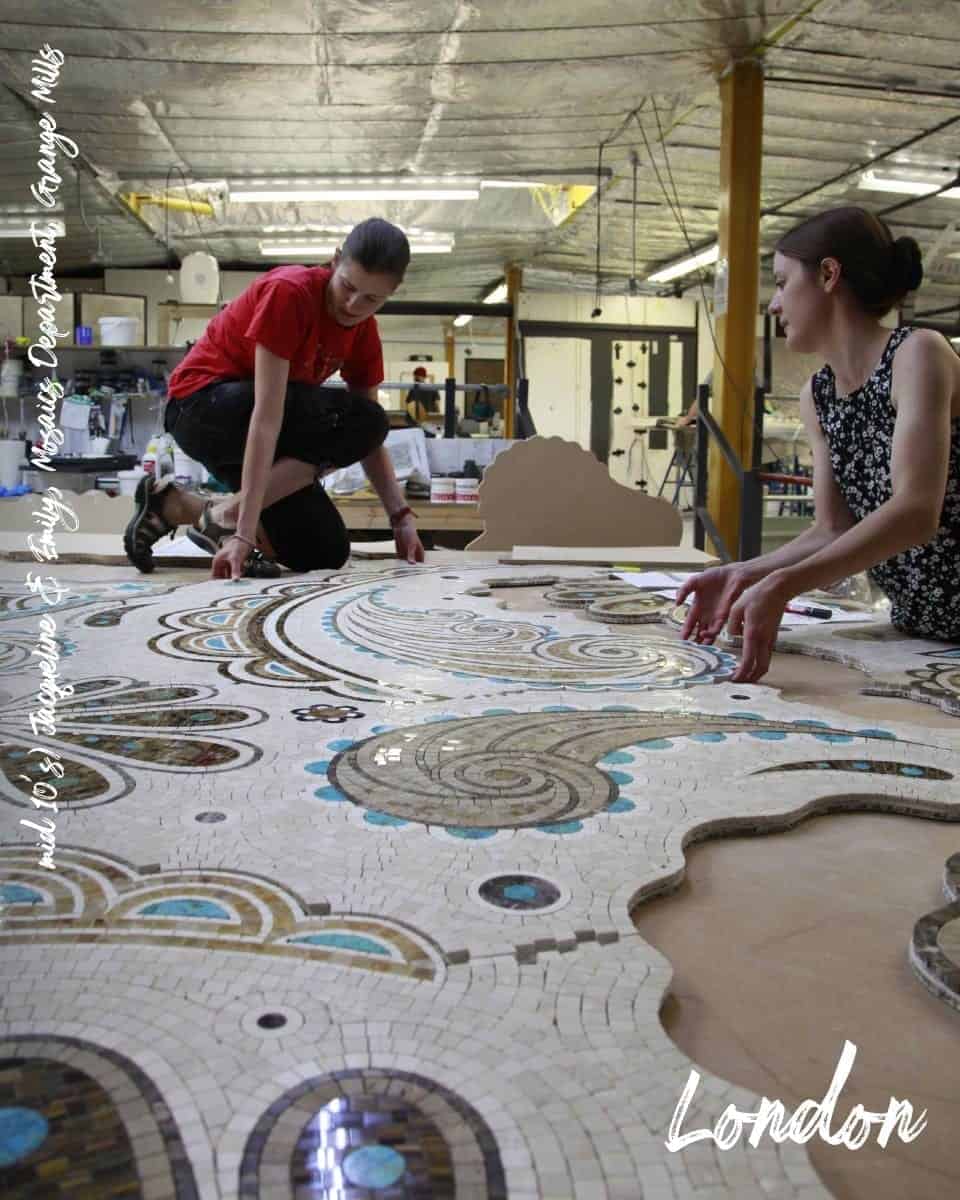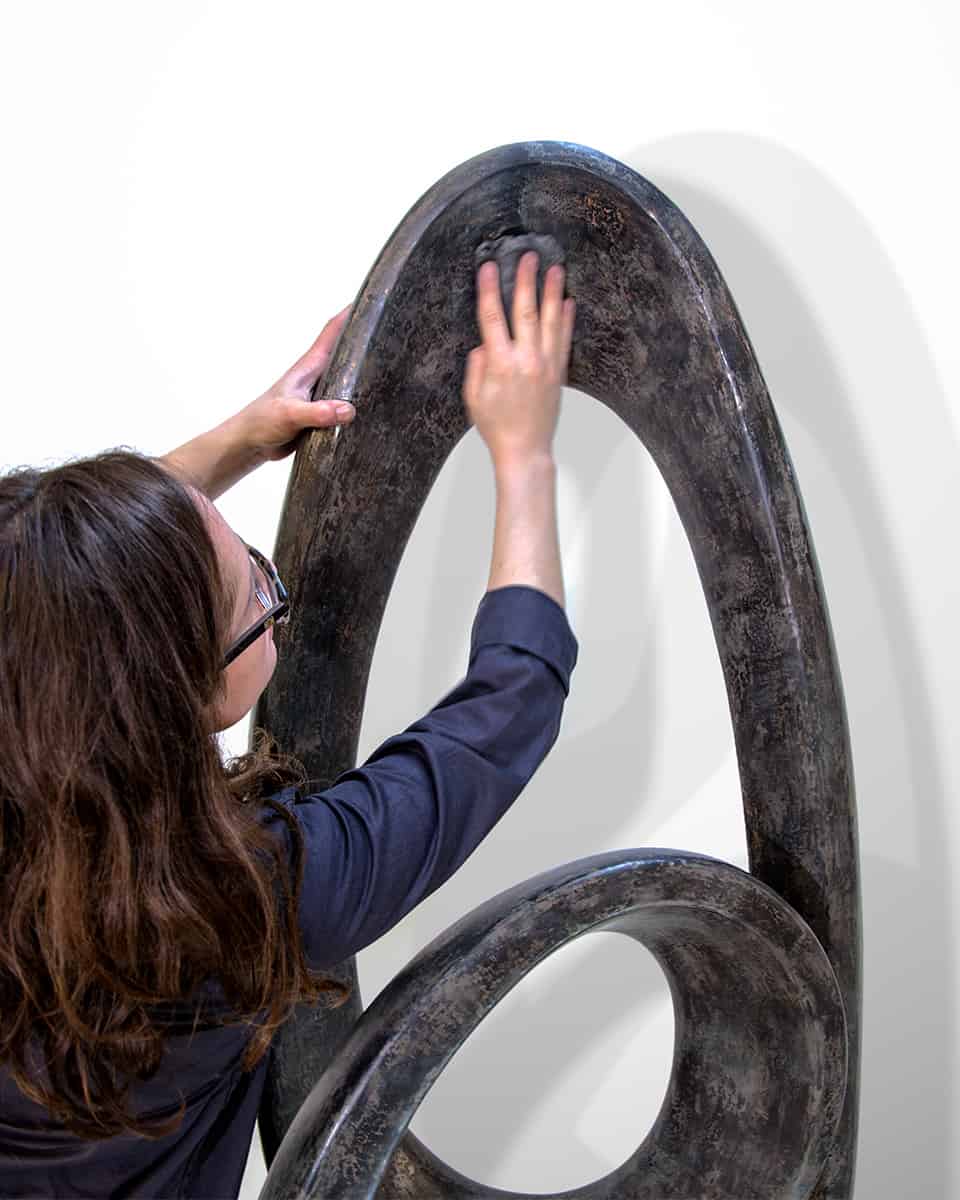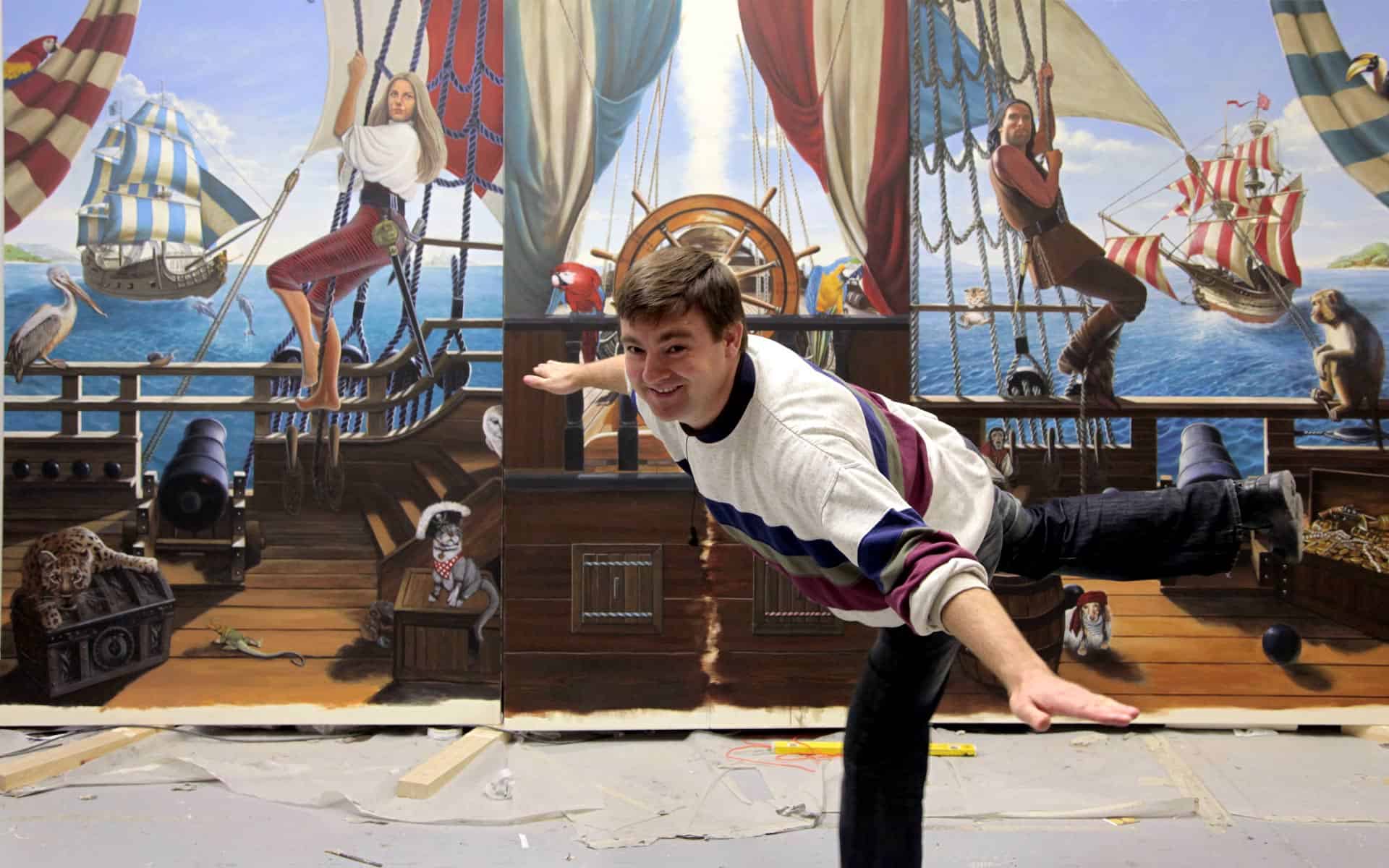Humble beginnings
In November 1979, three friends – Niki Davies, Steve Keeling and Sean Trowbridge, respectively graduates in fine art painting, sculpture and industrial design – formed a partnership that, through a few refinements of purpose, exists to this day as DKT Artworks. Their first job was at a church in Kew.
There were no cherubs painted on the ceilings and no gold leaf embellishments; no elaborately carved bas-relief friezes and no mosaic niches. It was white emulsion to the walls and ceilings and white gloss to the woodwork. Over the following months, as well as carrying out general painting and decorating, they designed and installed kitchens to finance their research and experimentation, gradually developing their own portfolio of paint finishes.
Building a portfolio
Steve’s father, Les Keeling, had been a painter and decorator and, as would have been normal for any well-trained craftsman in the 40s and 50s, he knew about graining and marbling, so he gave Steve and his partners his treasured three-volume copy of the early 20th Century craftsman’s bible “The Modern Painter & Decorator”. This technical underpinning, combined with their own talent and enthusiasm were the building blocks they needed for their first portfolio, in truth far more impressive and comprehensive than their actual experience.
It would be good to claim that the three founders had foreseen the renaissance of decorative finishes in the early 80s, rather than being in the right place at the right time. But as fortuitous as this was, whereas many painters were happy to stick with a safe and limited repertoire of stippling, rag-rolling and pastiche marbles, Niki, Steve and Sean were more ambitious. By now what had started as an interesting exercise had become an obsession, and one that they didn’t believe needed to end when the fashion for a passing style moved on.
What's in a name
It was time to find a name for this partnership, but agreeing on one proved difficult. Having trawled (and argued) through both the lyrical and the descriptive, they settled on the simple mouthful of Davies Keeling Trowbridge Ltd – no punctuation and no conjunction. So, having given themselves a name possibly more suited to a firm of solicitors, Niki, Steve and Sean set out to find work.
Their persistence proved positive and, as opportunities to demonstrate their abilities came along, the three founders were joined by other talented artists and craftspeople, further expanding their range of skills and forming the basis of a proper company.
The first workshop
Up to this point they had been working out of a garage in North London (“The Yard”) and a small room in a South London flat (“The Office”), hardly ideal for a growing workforce, so in 1984 they moved into Charterhouse Works, an old Victorian factory in Wandsworth, South West London, which was to be the home of DKT (as they became known) for over 20 years.
This more organised, better-equipped environment allowed them to commit to more ambitious projects. Installing a spray facility meant that they could combine distinctive hand-painting with strong lacquers. At this point high-end shopfitting projects began to come along, in addition to jobs as disparate as faux ‘ajulejos’ craquelure tiles for installation in a shopping centre in Macao and the art deco interior of a restored flying boat. On-site work saw them travelling as far afield as Hong Kong and Singapore, as well as to Bahrain, Rome and Geneva.
A growing business
By the late 80s, the addition of mural painting, polished plaster and gilding to the skill portfolio, as well as the introduction of the “Agenda” range of finishes, aimed at specifiers, contributed to the success of DKT in the commercial property world, flourishing after London’s “Big Bang” as a financial capital in 1986. The company was becoming established as one of the leading practitioners of bespoke finishes and specialist decoration and they were commissioned to produce ‘Fantasy Finishes’, a practical book for the burgeoning home improvement market.
“Art school trained, they bring an artist’s eye – and brush – to interior design. As well as promoting and developing traditional paint effects, DKT have ‘invented’ many new ones” – John Wainwright, 1989
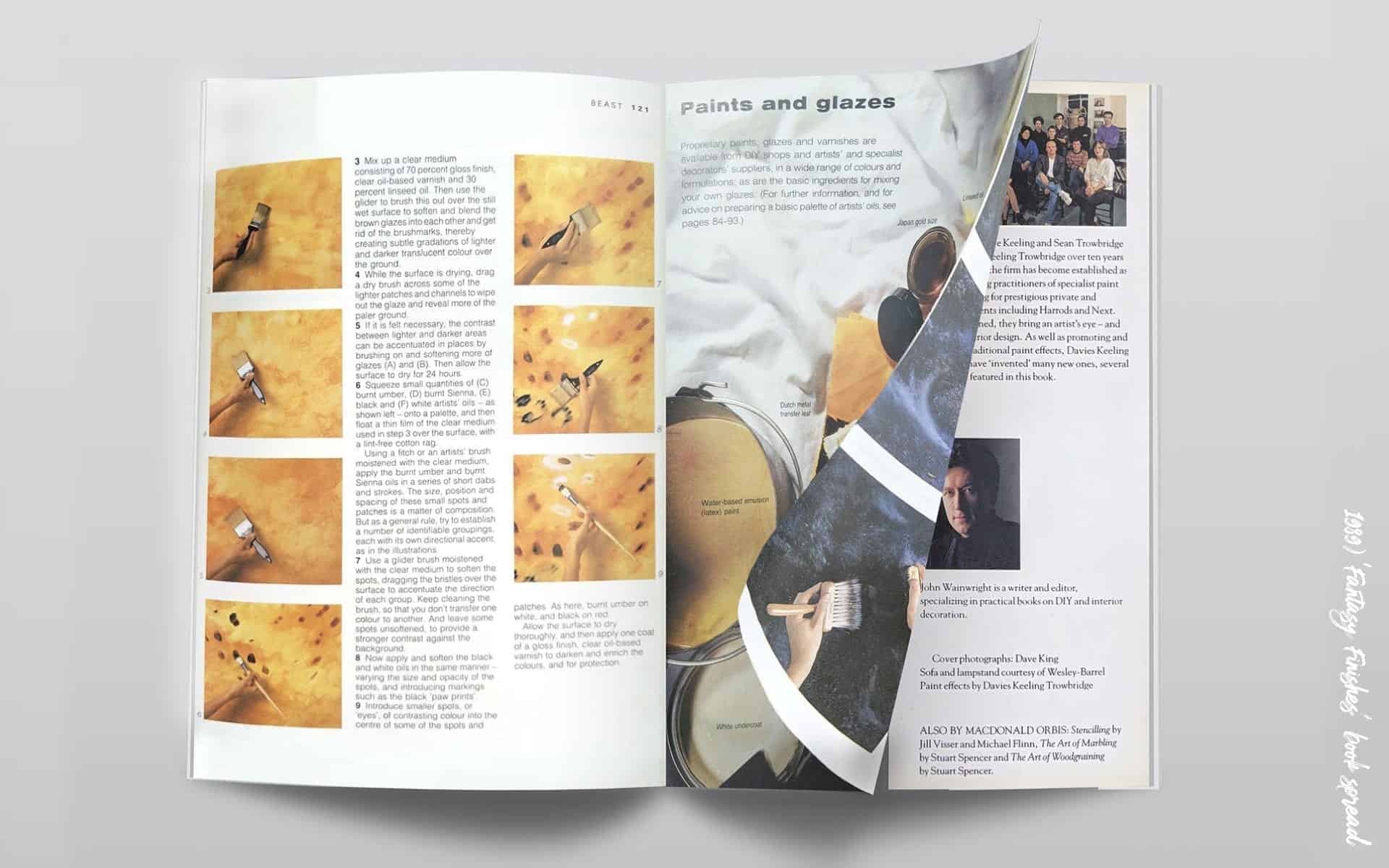
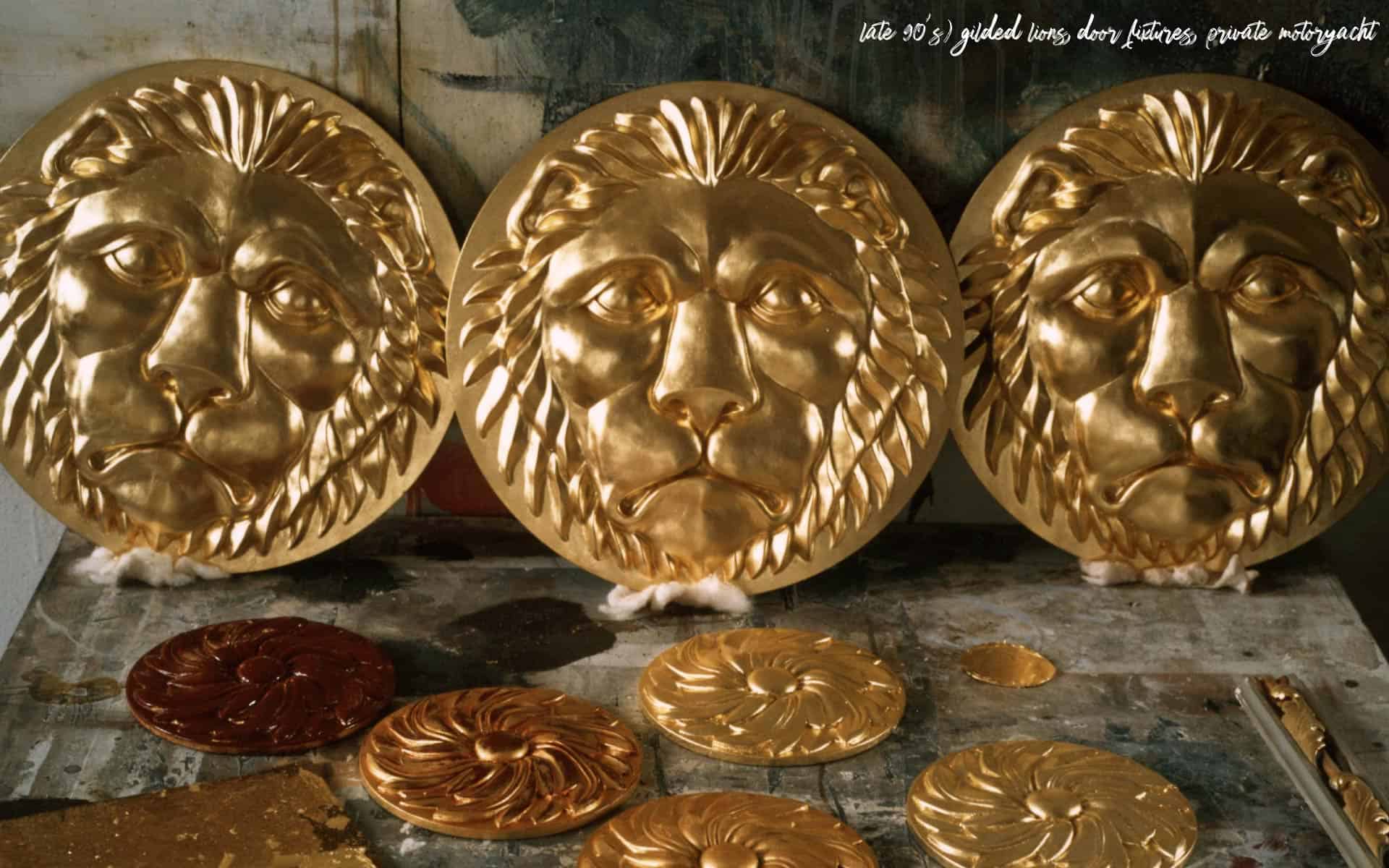
New challenges
As the early 90’s brought financial uncertainty, and commercial work contracted sharply, DKT set out to widen their market base. At the same time Niki Davies withdrew from the company, moving to the West Country with her young family.
By the end of the millennium Steve and Sean were looking back at a decade that had seen their range of skills flourish and their client base expand, and they were able view DKT as a fully-formed company with an established workforce and reputation. In addition, a new opportunity had presented itself in the form of the Marine industry, a market that would give full rein to DKT’s creative potential.
The first decade of the new century saw DKT on another steep learning curve as they responded to the demanding aesthetic and technical requirements of the superyacht market.
Establishing relationships
Their period at Charterhouse Works came to an end when they moved to a more modern and spacious studio in Vauxhall. By then they were doing an increasing amount of three-dimensional work, designing, modelling, carving and casting bas-reliefs.
The ever-expanding range of work now meant that it was impractical to keep everything in-house. Despite being reticent about working with outside companies in the past, it was now time to start building up long-lasting relationships with like-minded companies whose specialisations added to DKT’s potential, such as companies who worked with hot glass and forged metal, as well as ones that fabricated acrylic and milled materials using CNC. In addition, the young graduates now joining brought CAD skills that further improved communication with designers, architects, suppliers and contractors.
A bespoke home
Although they had intended to stay in Vauxhall longer, the proposed relocation of the US Embassy right over where DKT had its studio meant that in 2012 they were on the move again, this time to a new location in Balham, South West London.
The disruption of the move itself was unwelcome, but it brought with it the opportunity to customise the new building to accommodate the wide range of skills and the increased workforce DKT now comprised. Apart from a vibrant workshop, there was now space to display an ample selection of their huge archive of work, a living museum of DKT’s past and a showroom of its present.
In 2013, with a confident company structure, studio and client-base, it was time for “Davies Keeling Trowbridge Ltd.” to officially become “DKT Artworks Ltd.”, a name which better reflected and represented the sizeable team of artists as well as the founders.
Today & beyond
DKT Artworks is now a company whose strengths come from a substantial, committed, and varied group of people, from many countries, with the longest serving members being with them for over 35 years, to younger members, as well as some who are even second generation. As evidence of this, in 2020, such resourcefulness was put to the test in finding ways to maintain production during the height of Covid. Everyone responded positively, from setting up ad-hoc workshops at home, to accommodating segregated and shift working, hence ensuring that no deadlines were missed.
As a result, even through such difficult times, DKT Artworks showed it had become a company whose strengths combined experience and expertise, with the ability to deal with new and exciting challenges and opportunities.
In 2023 Steve and Sean decided that it was time to make the next step by turning DKT Artworks into an Employee Ownership Trust. Although they both remain fully involved, and there is a formal management structure, the company is now owned by a Trust, whose members are all the employees, ensuring the continuity of DKT Artworks deep into this century.
